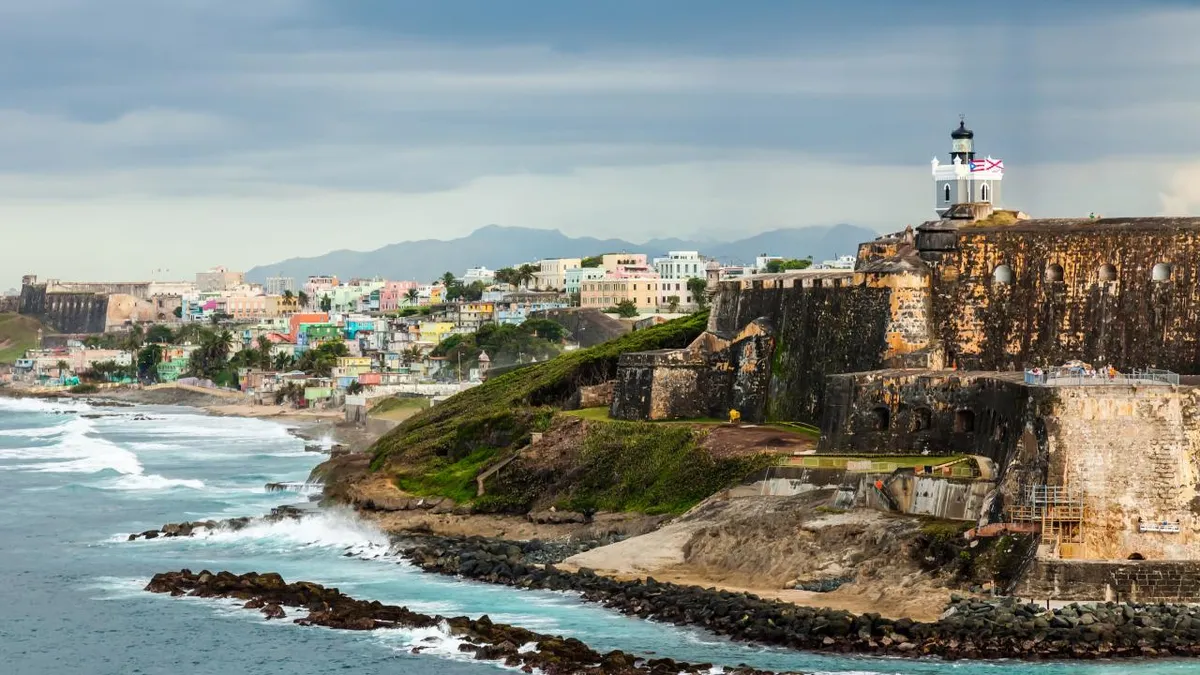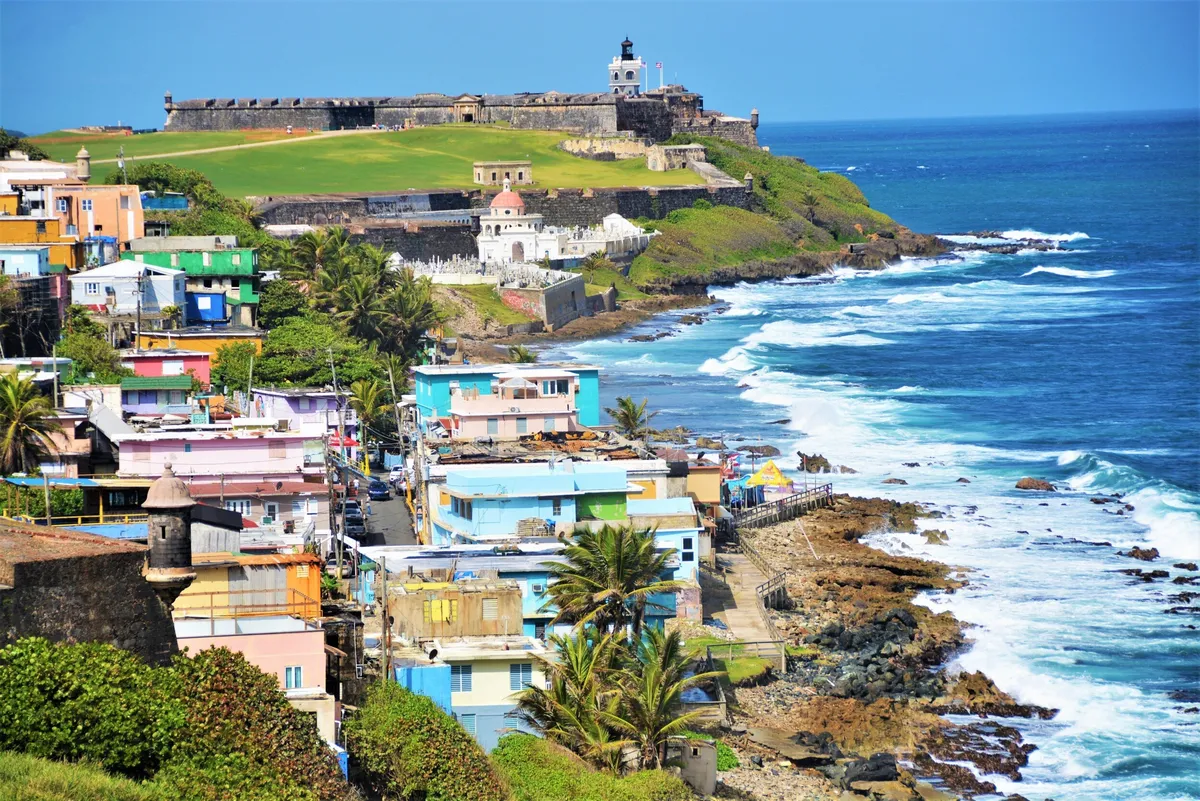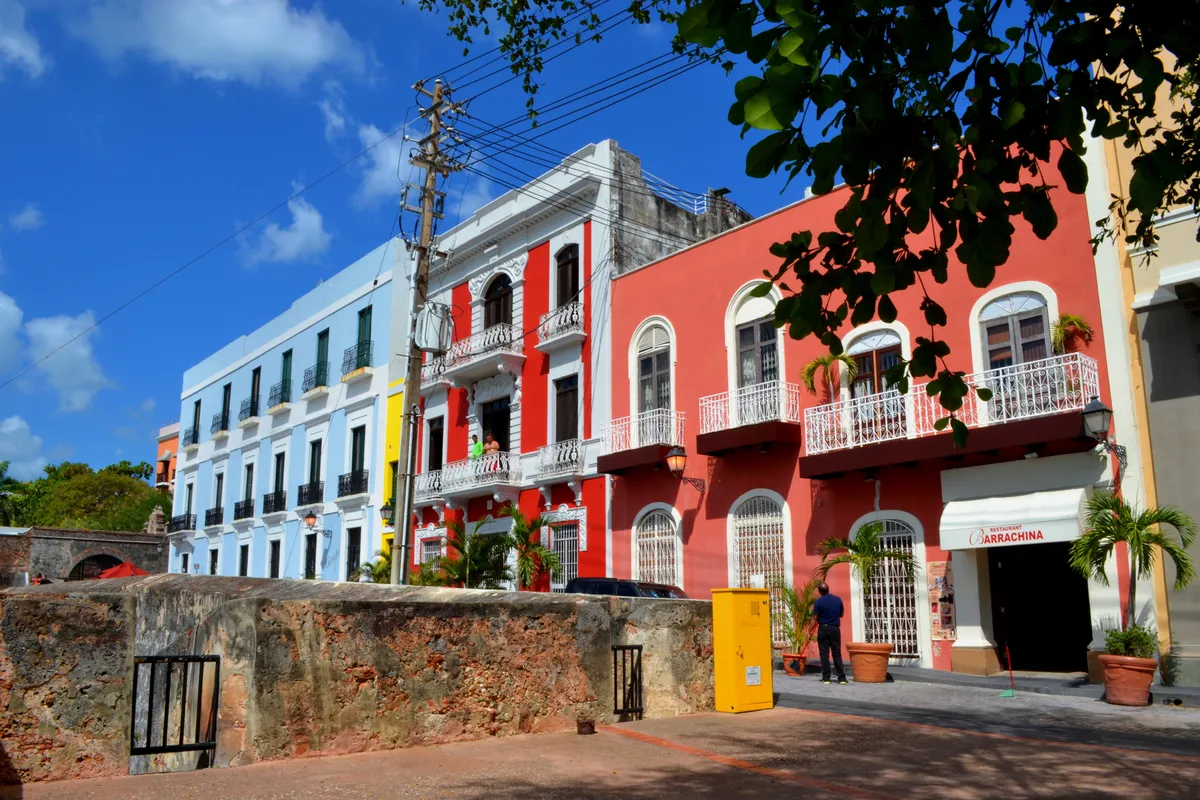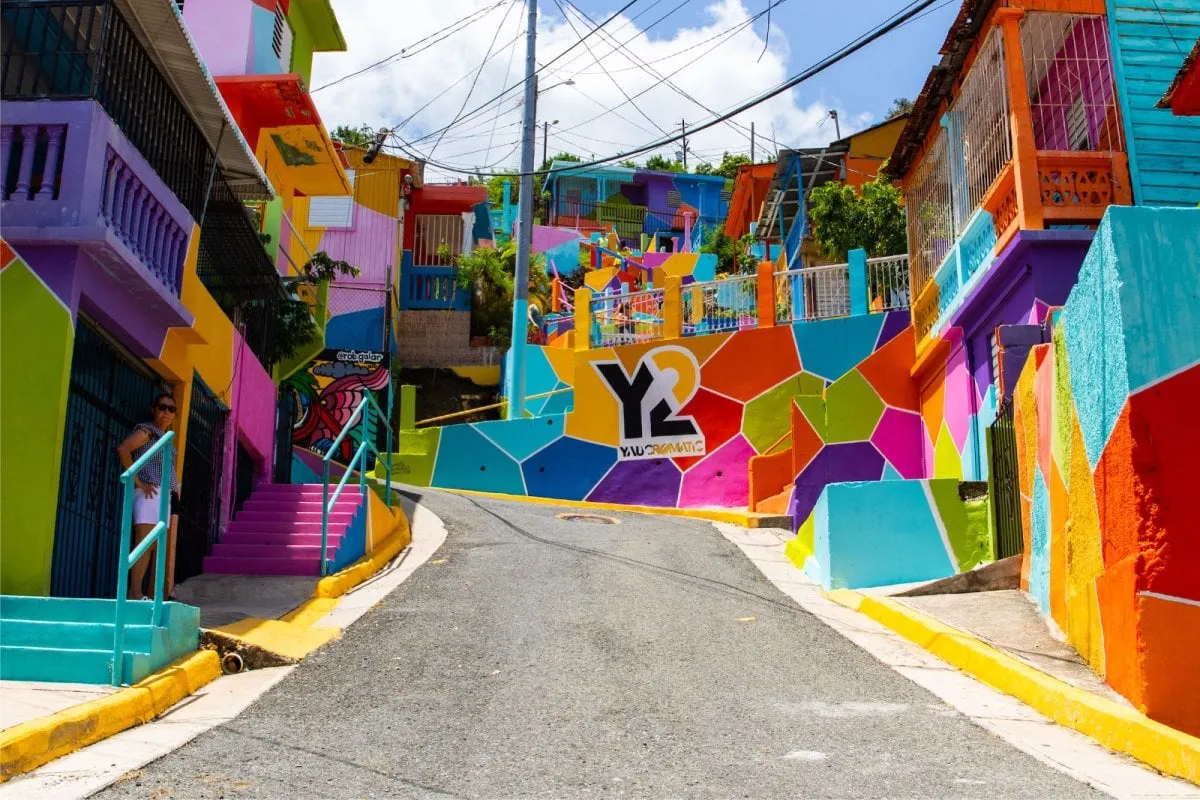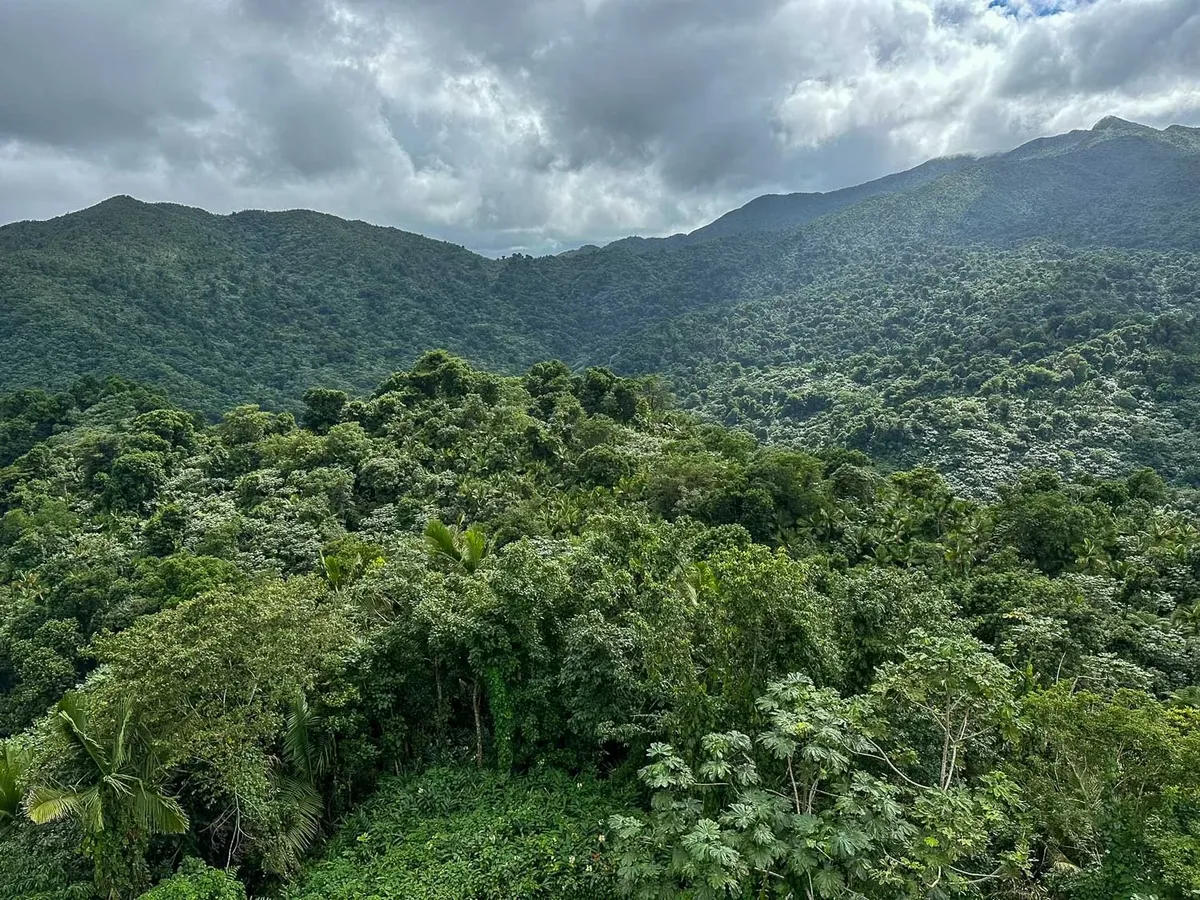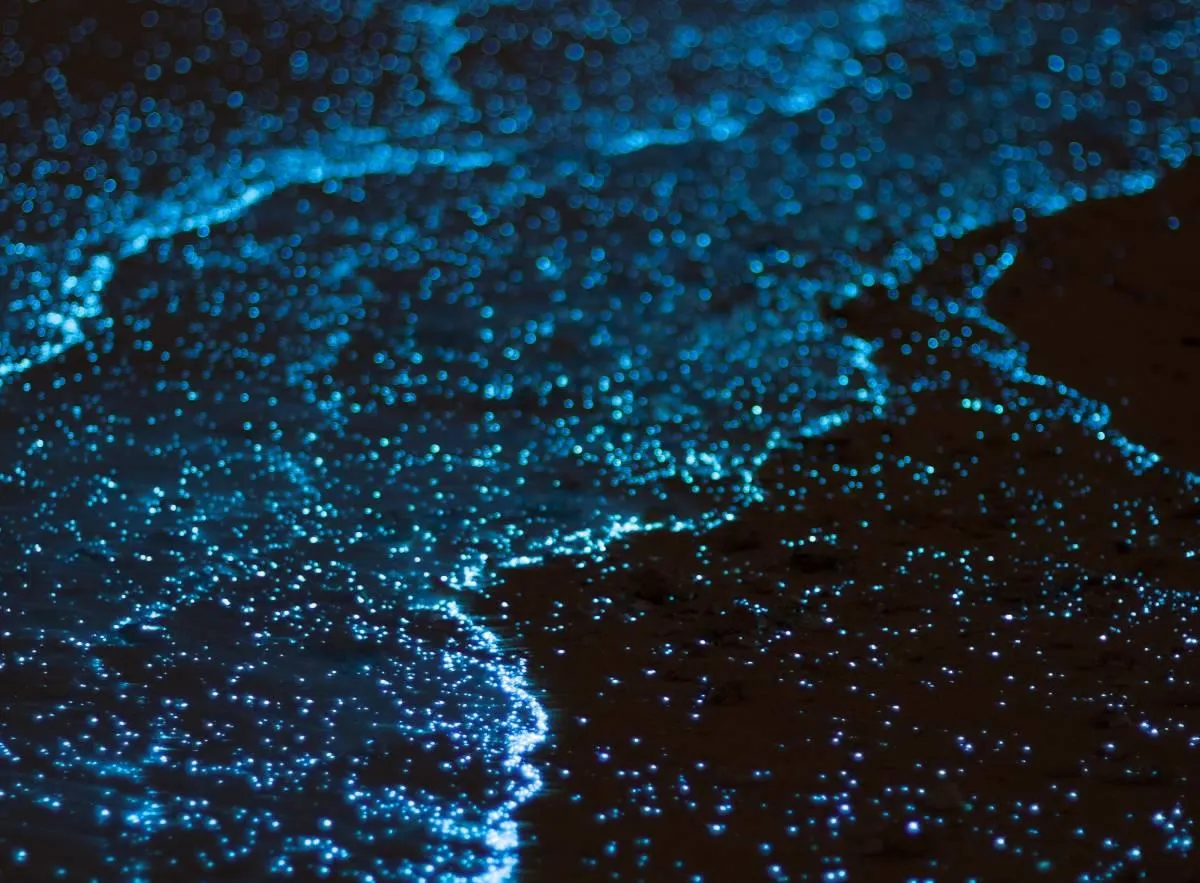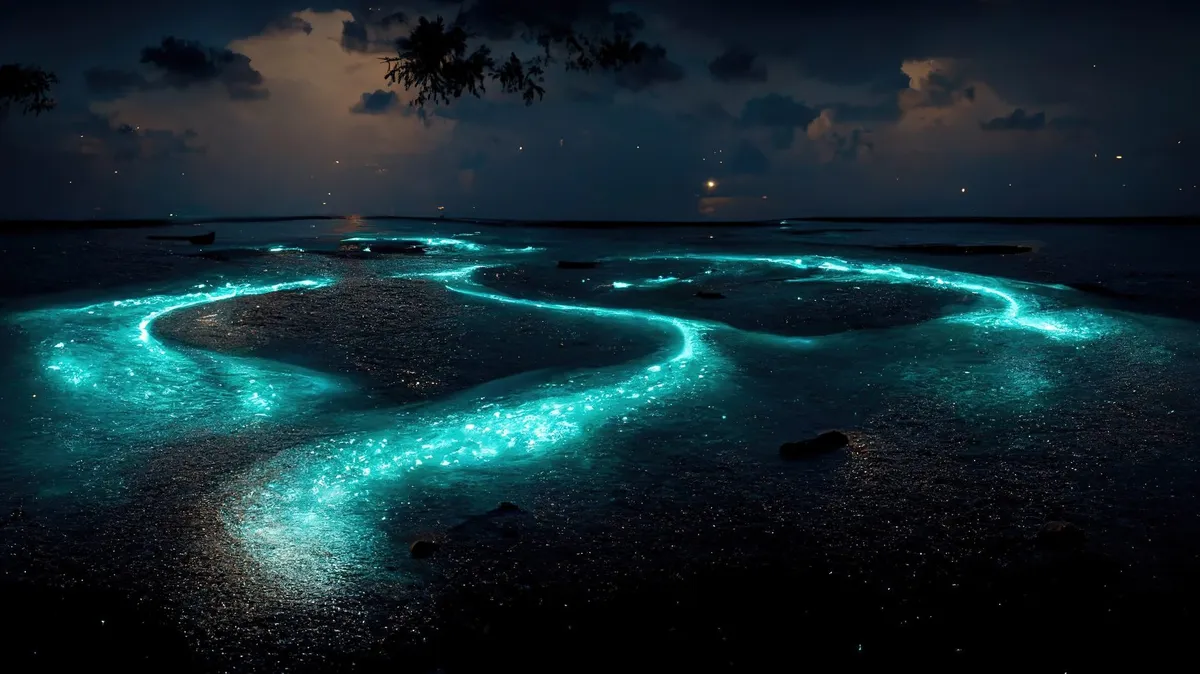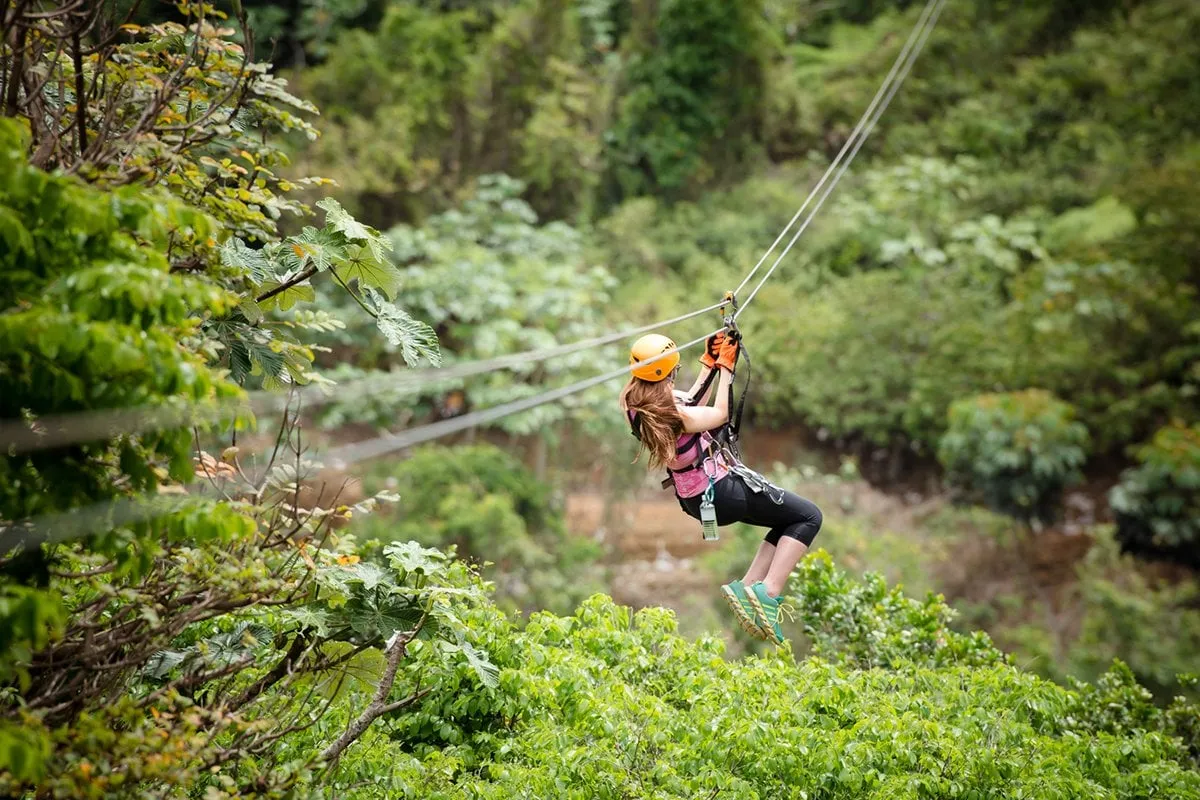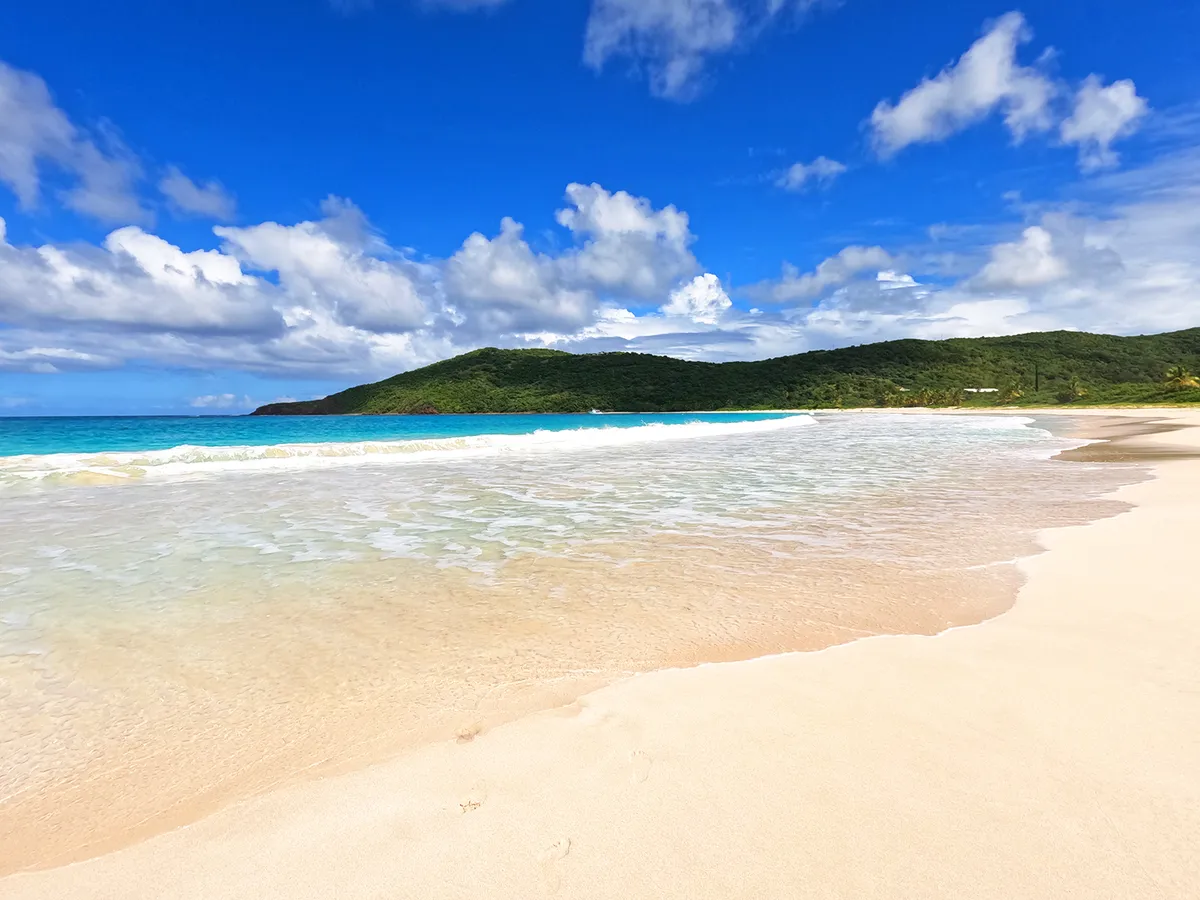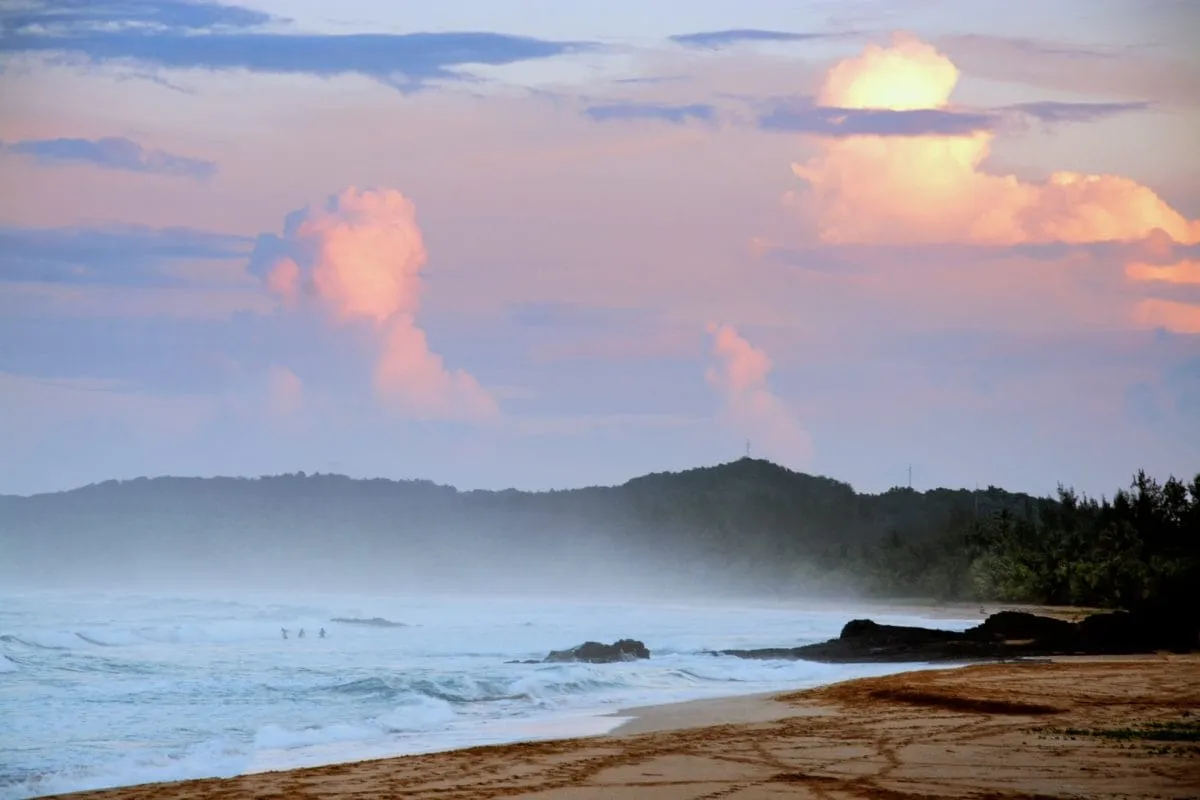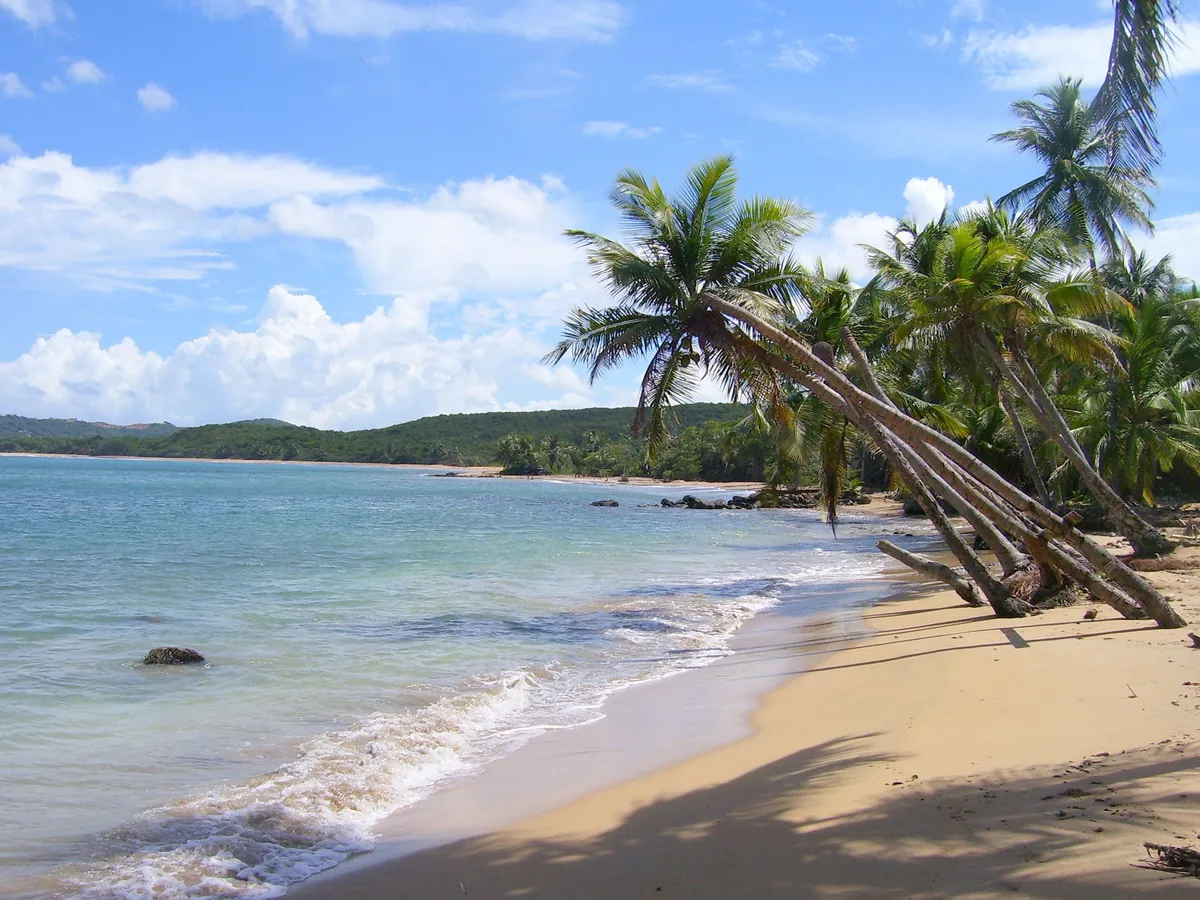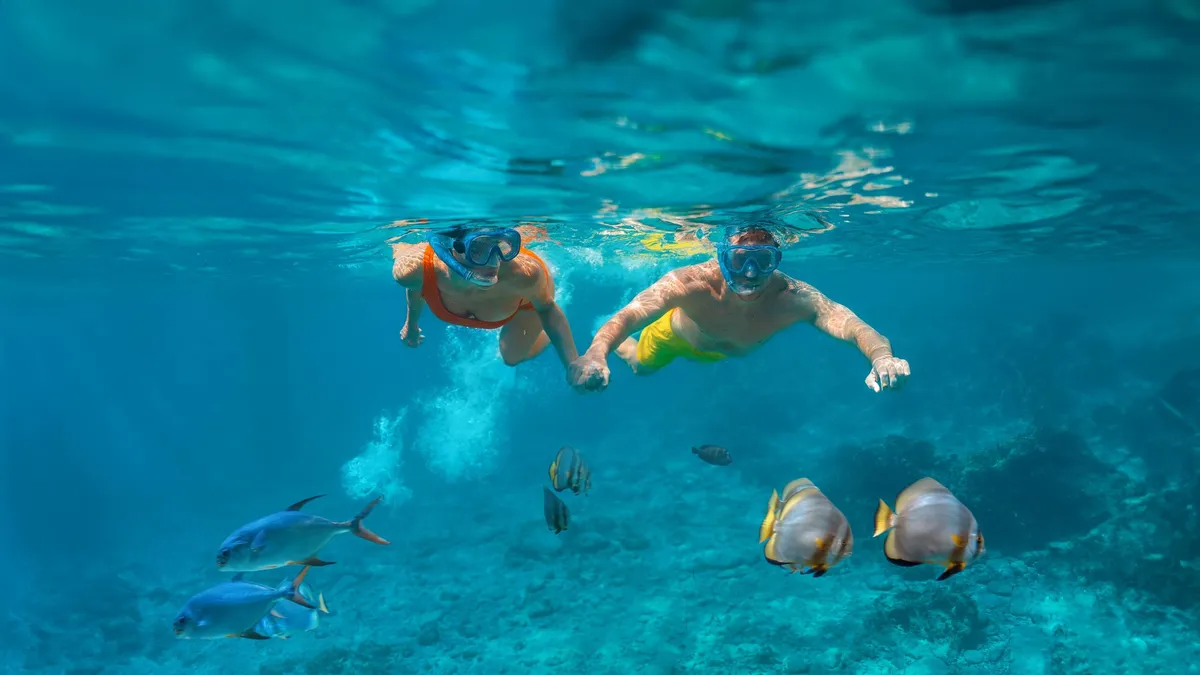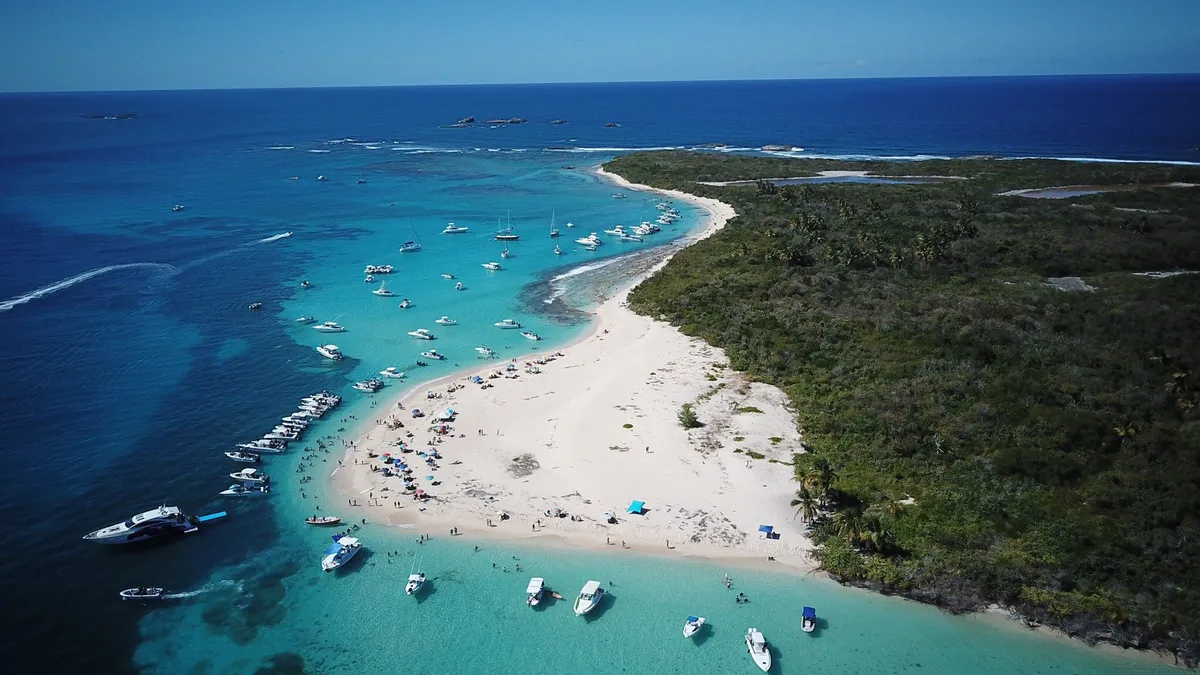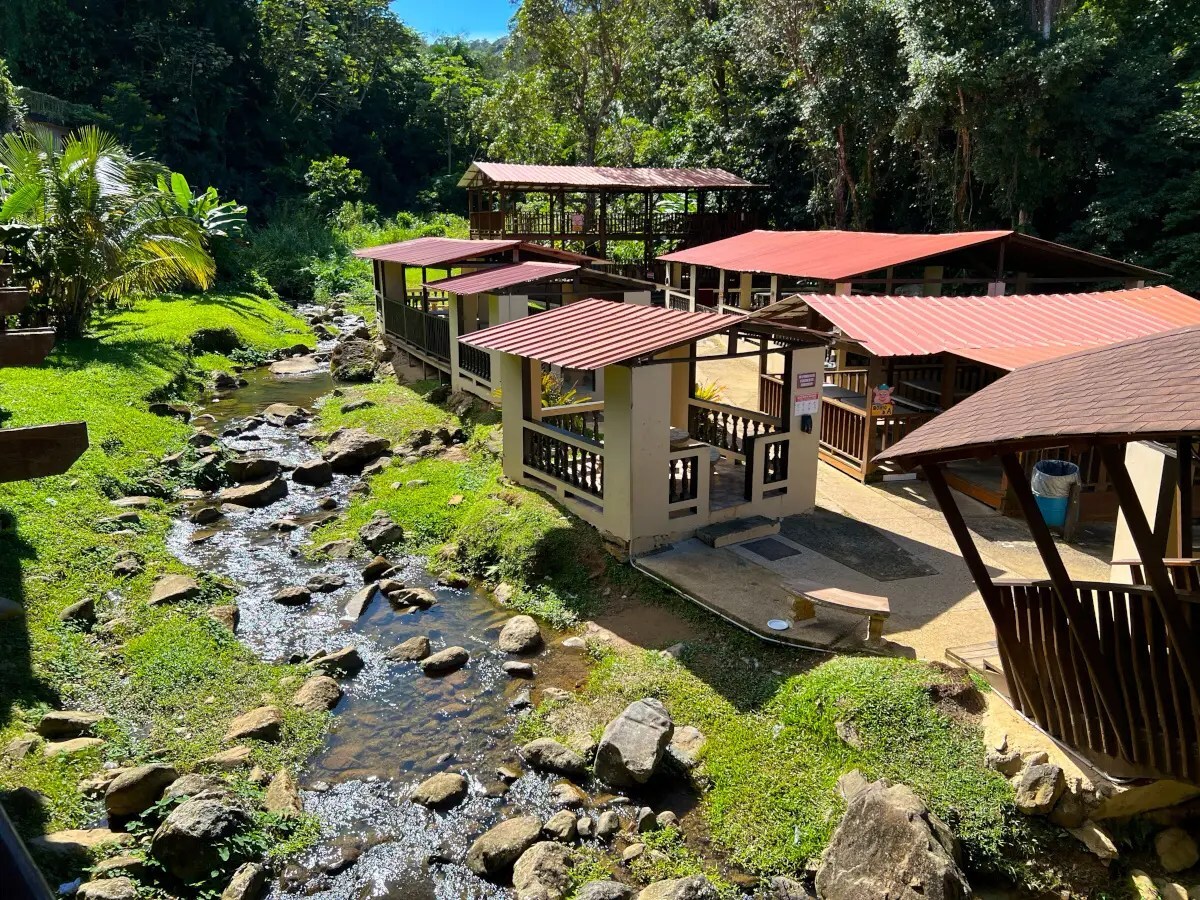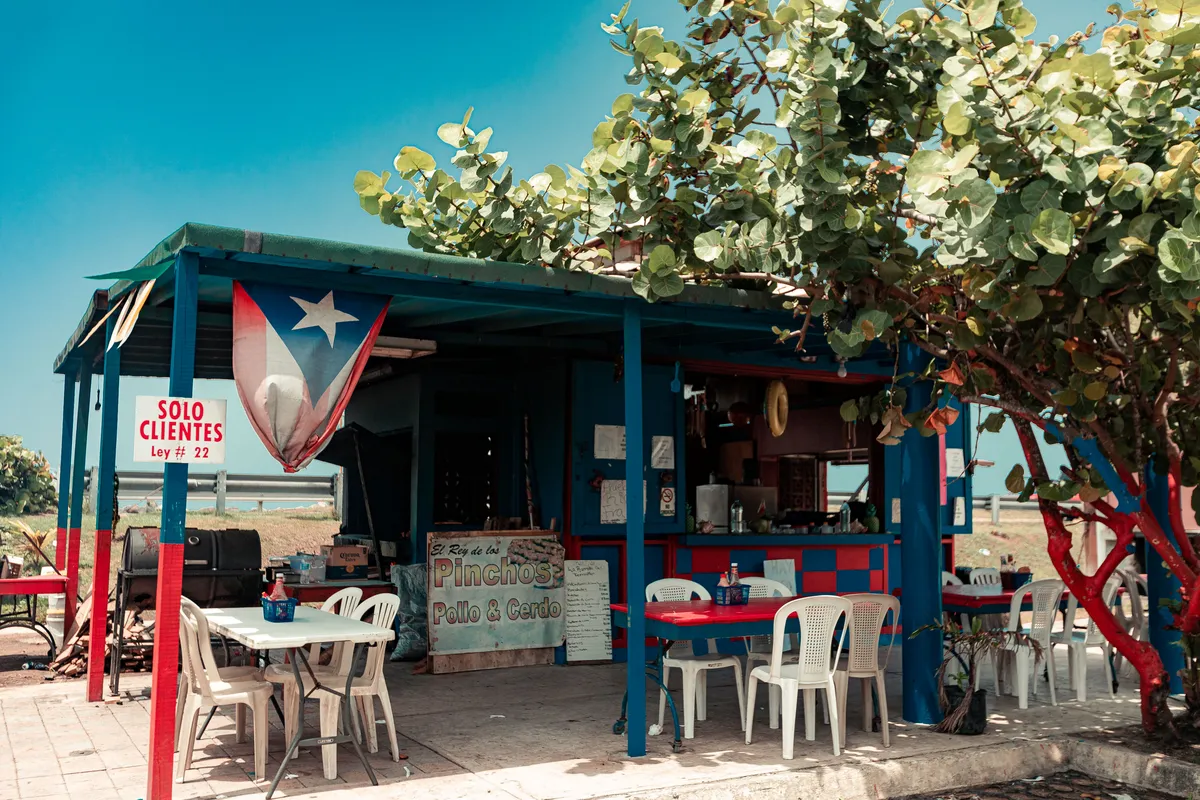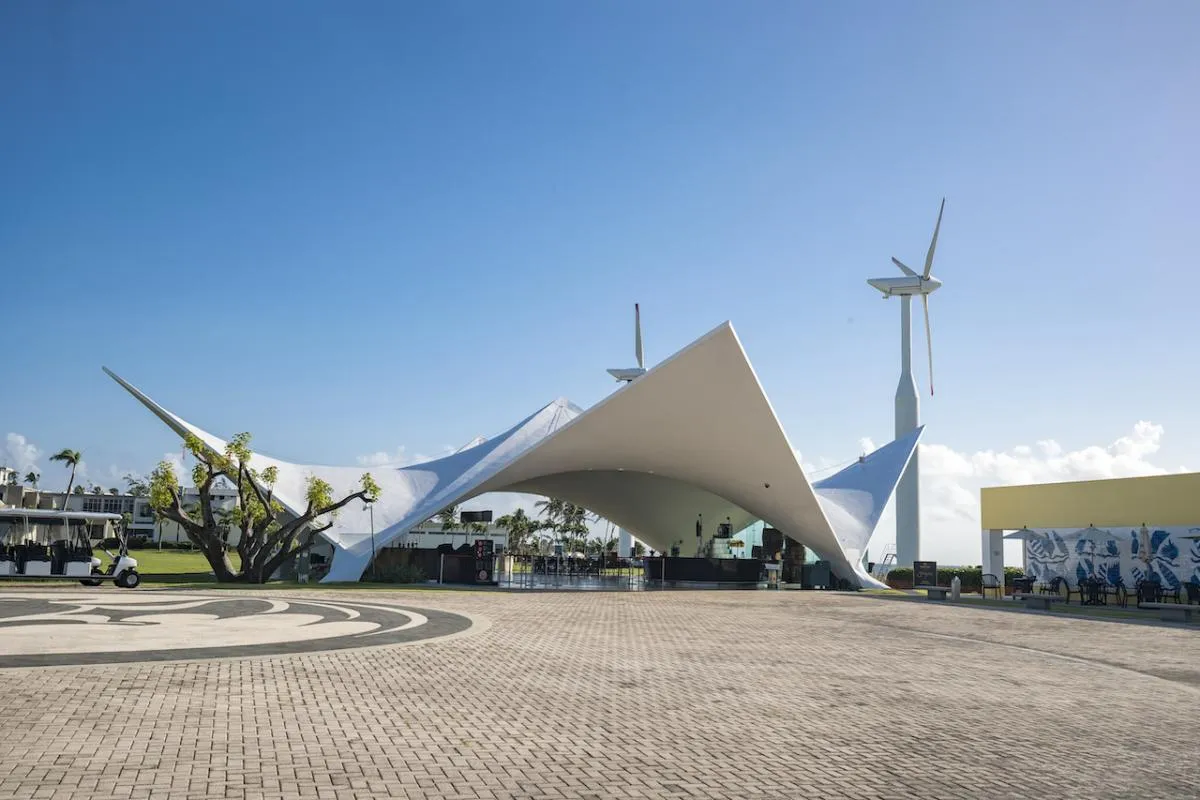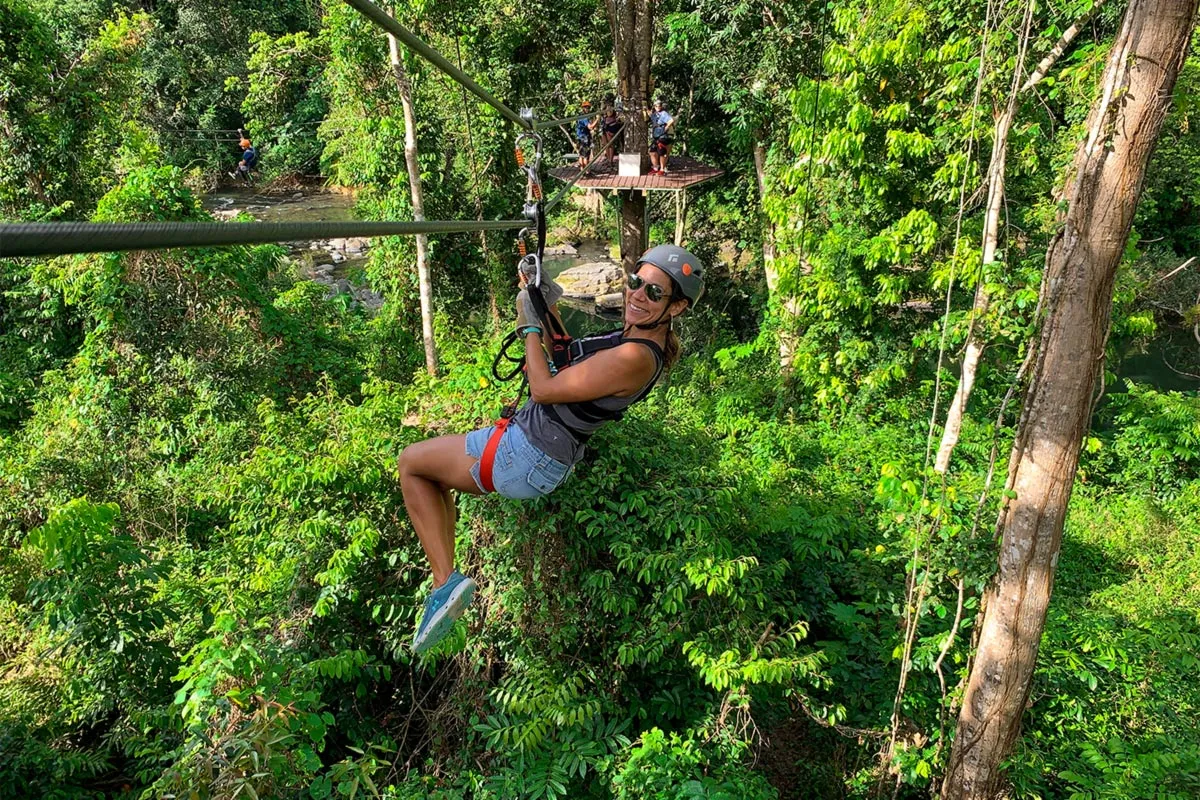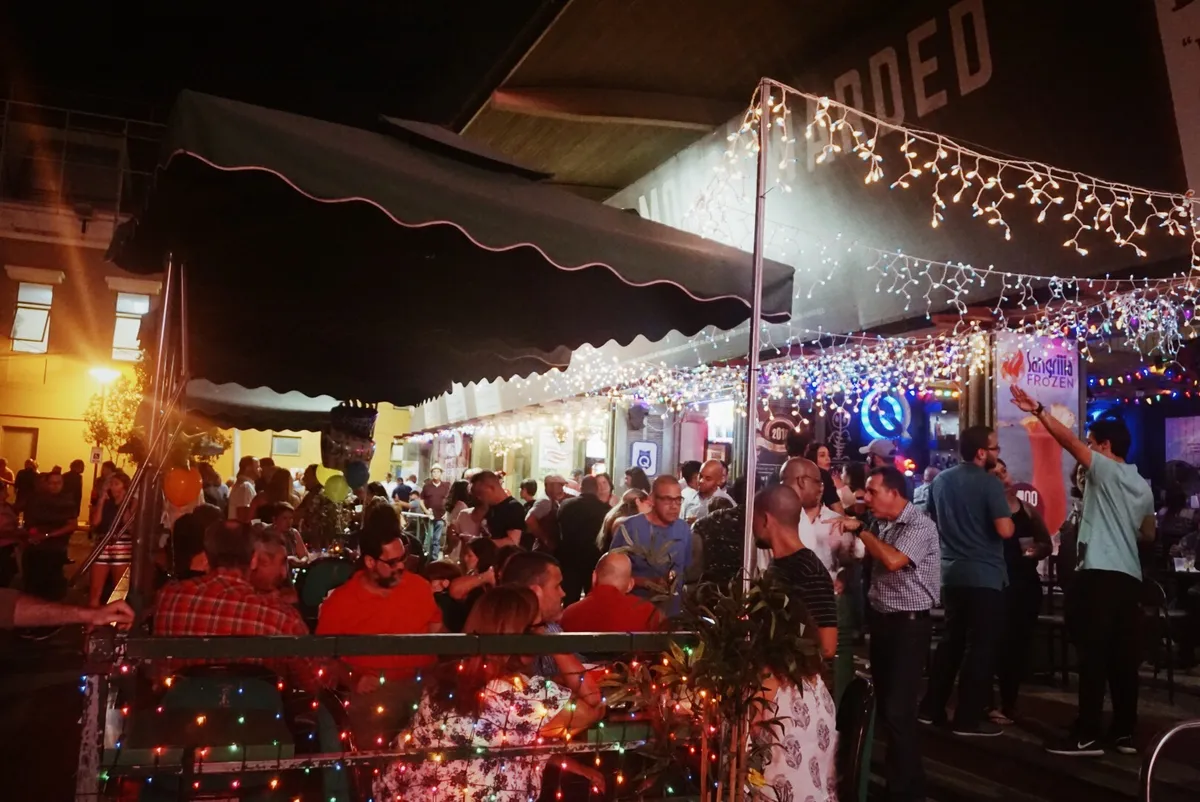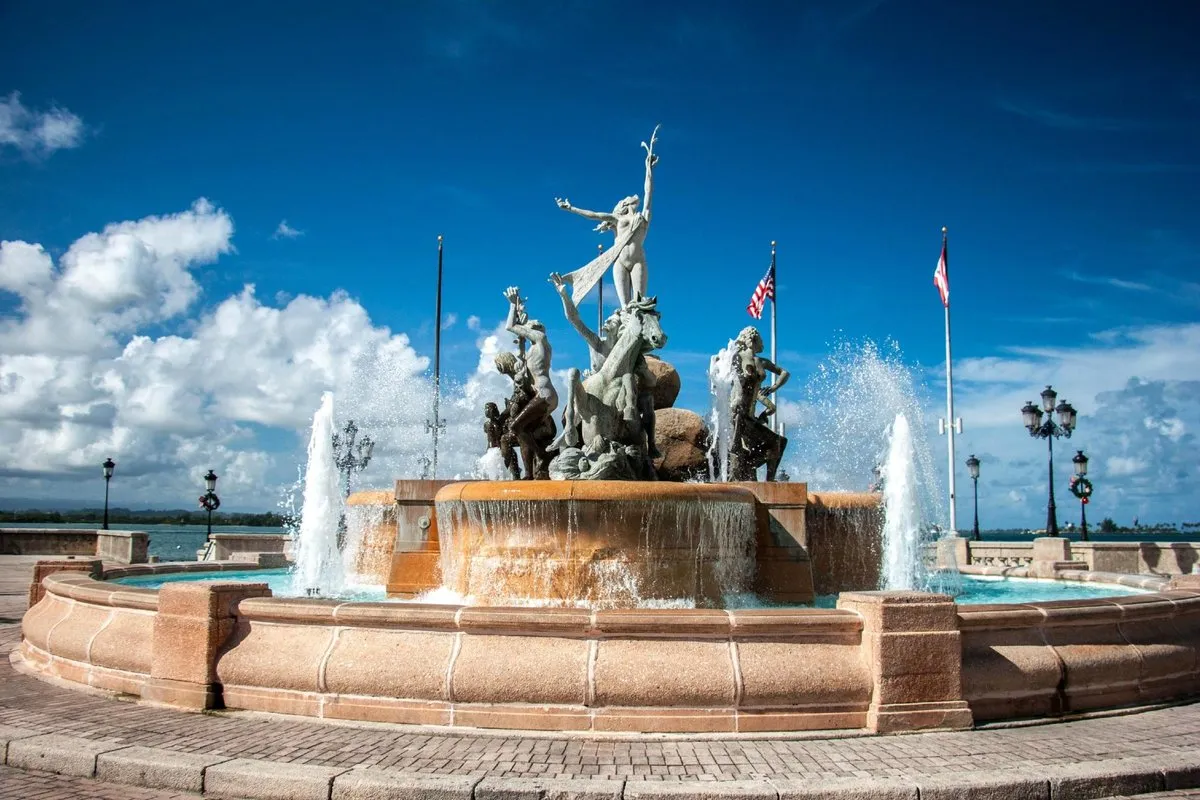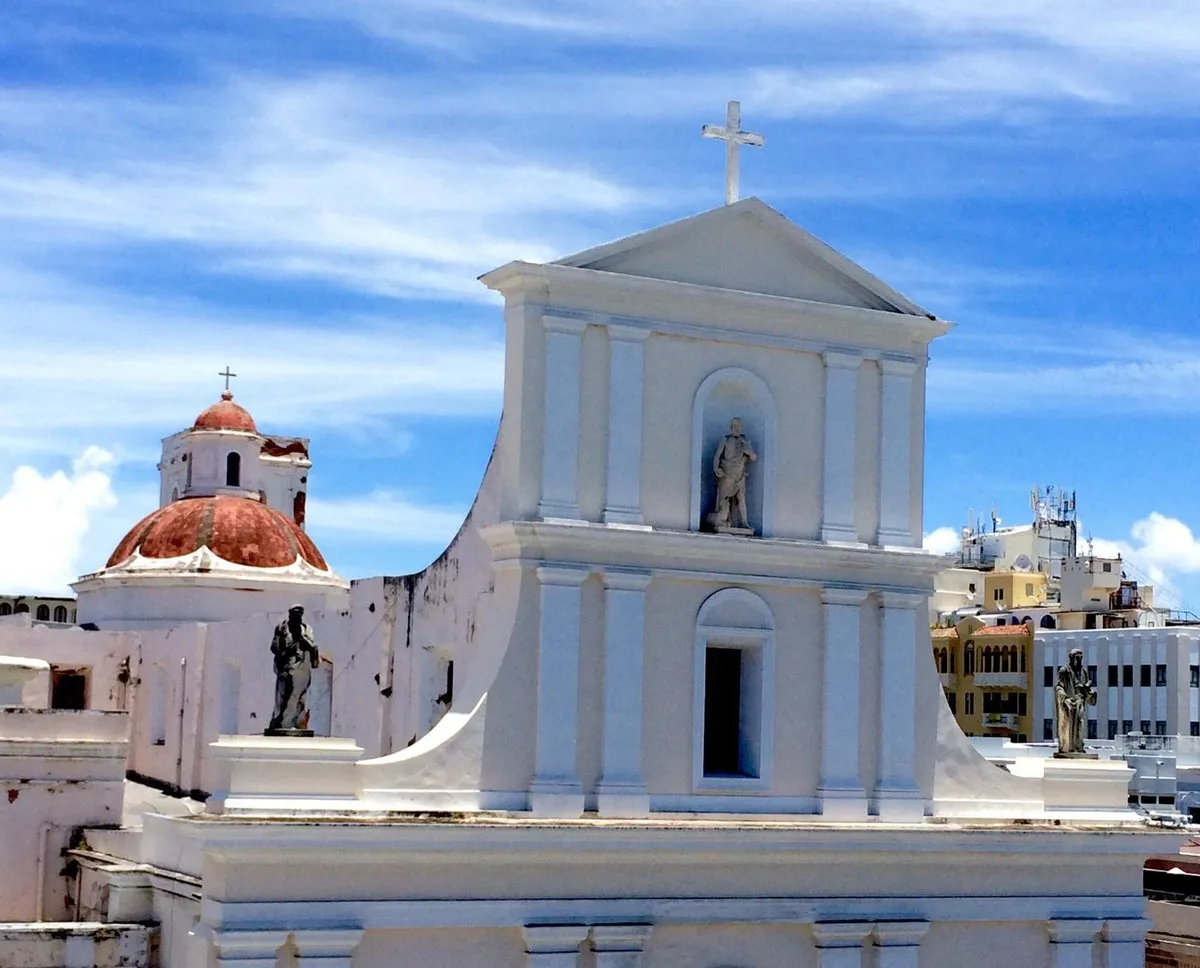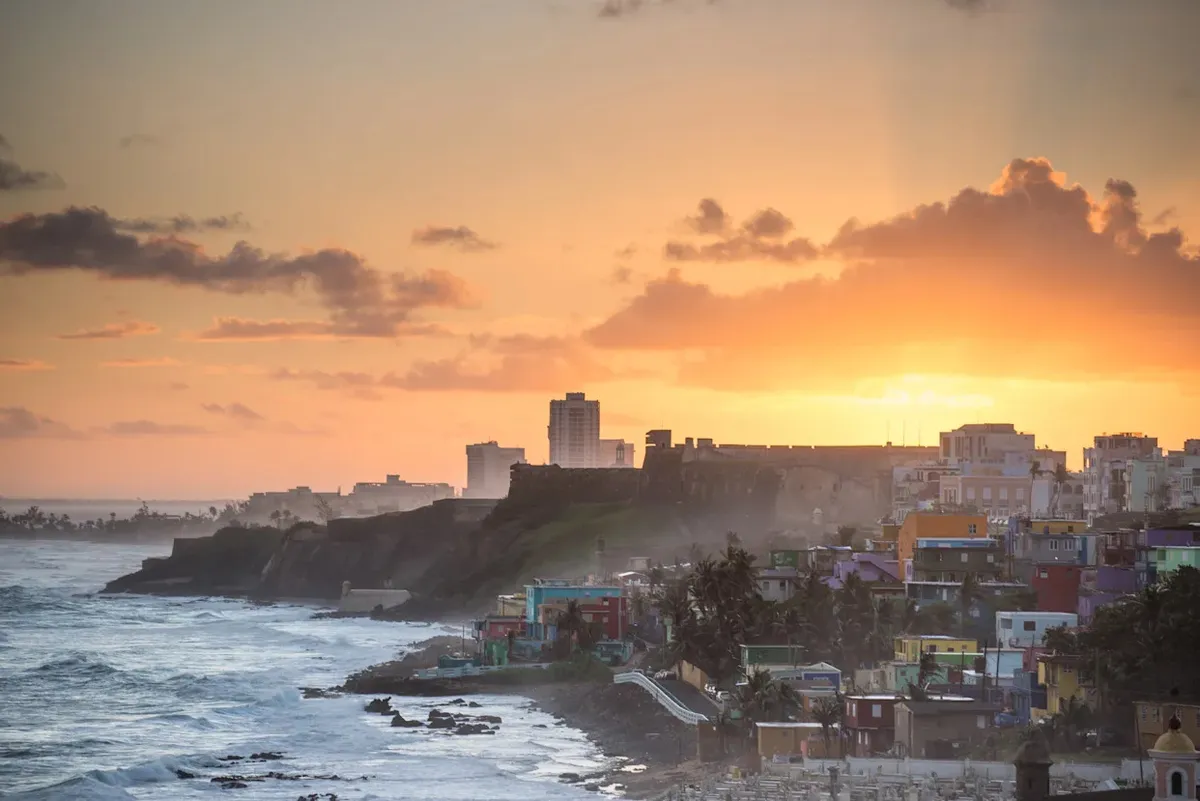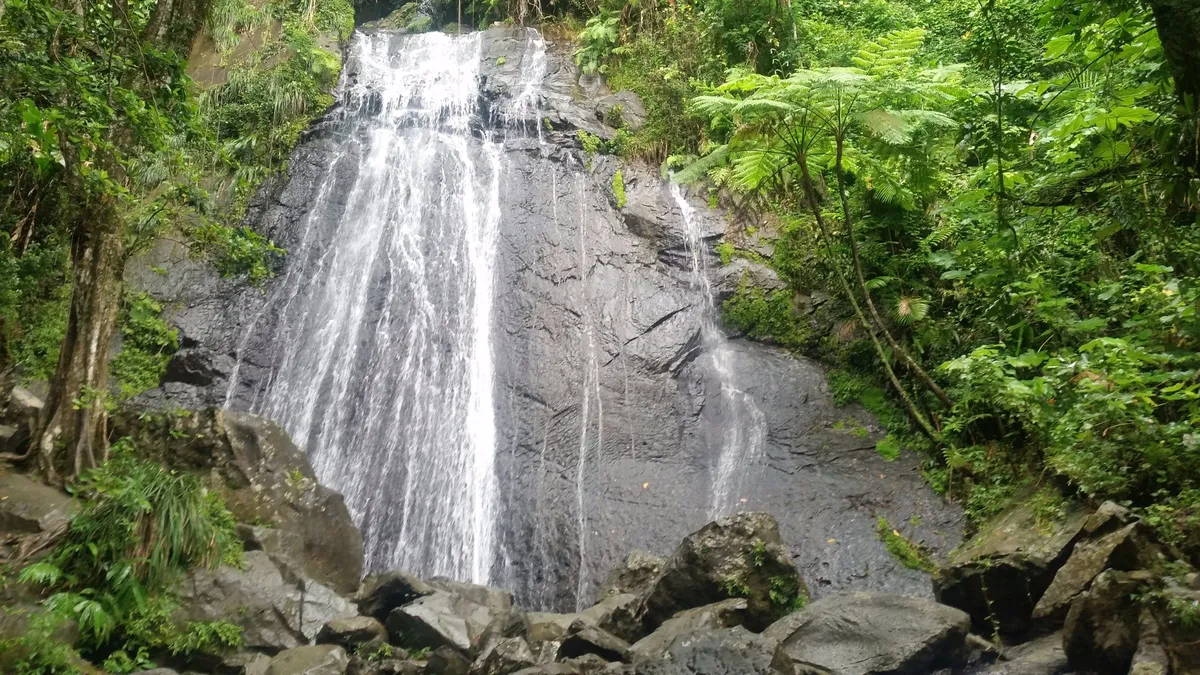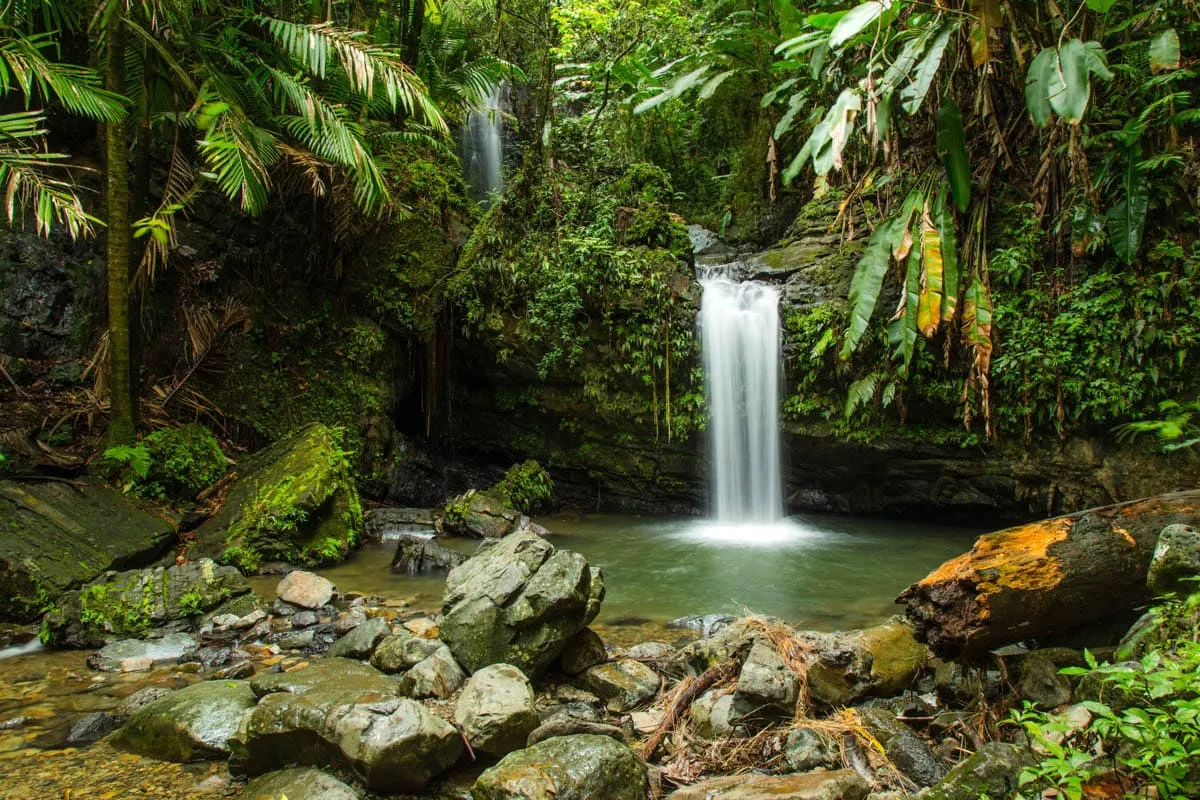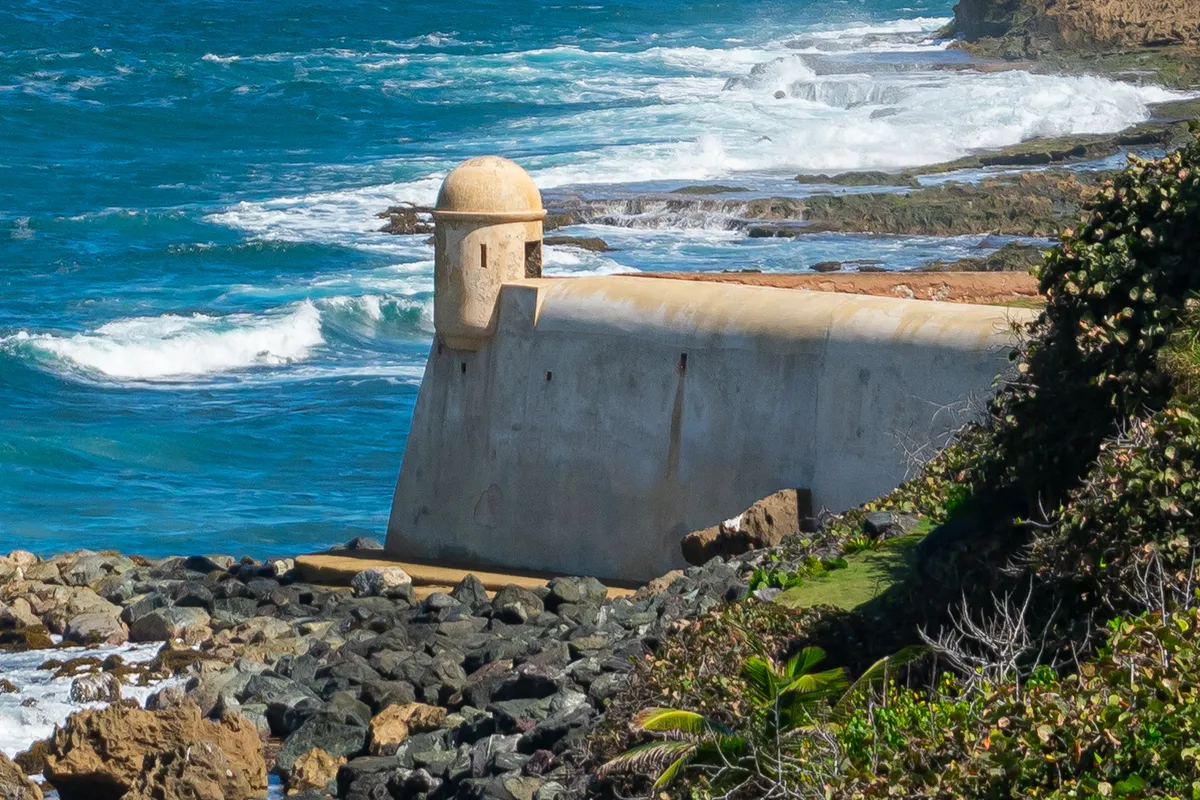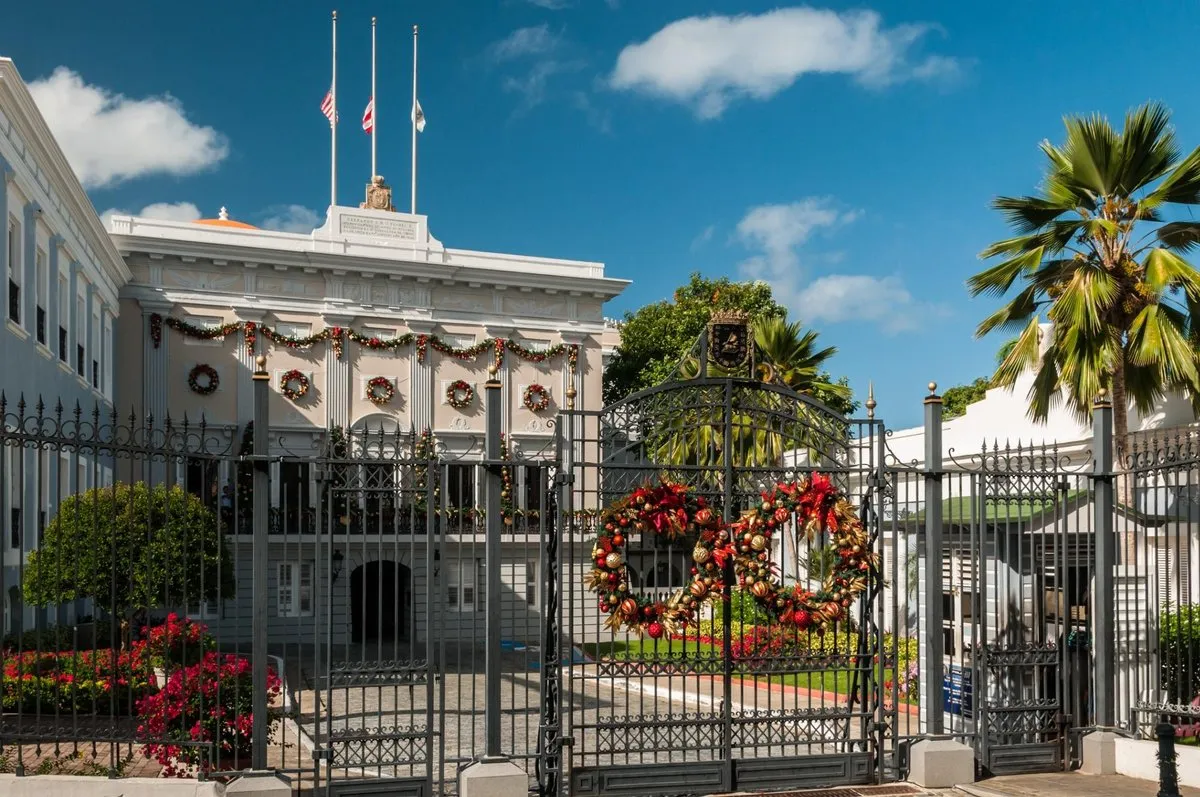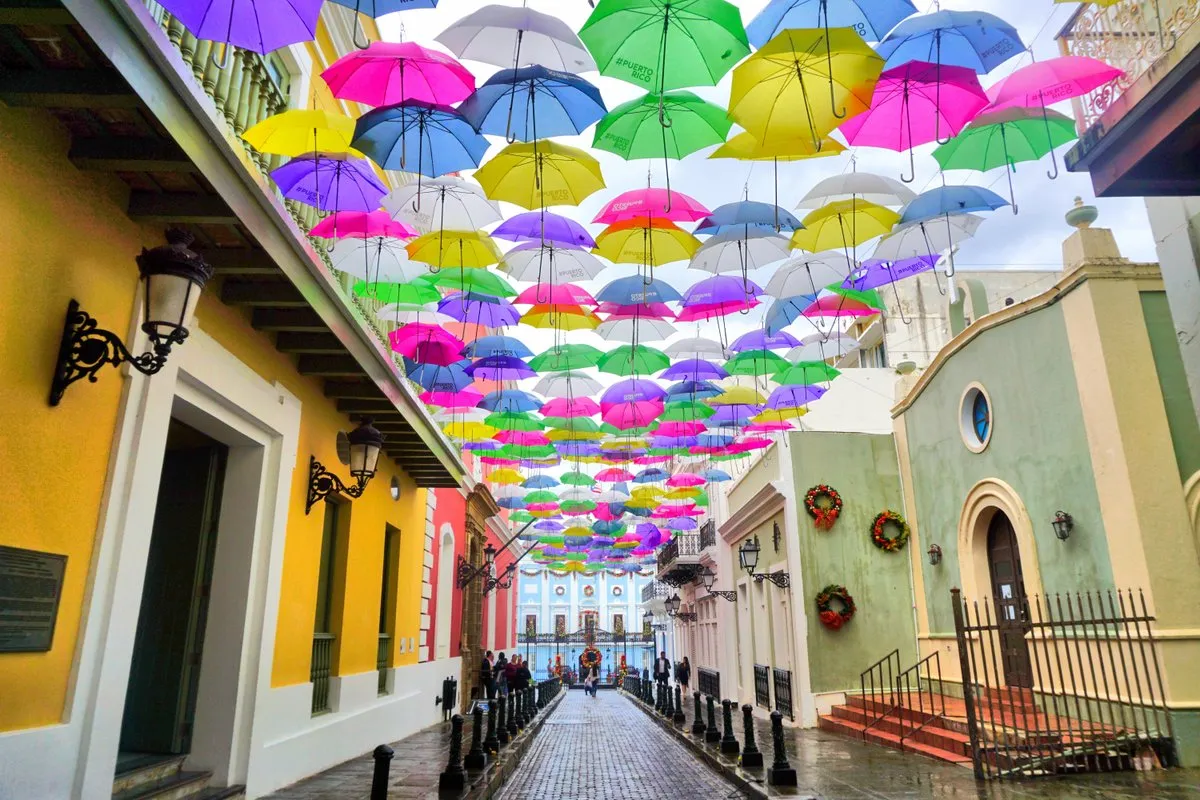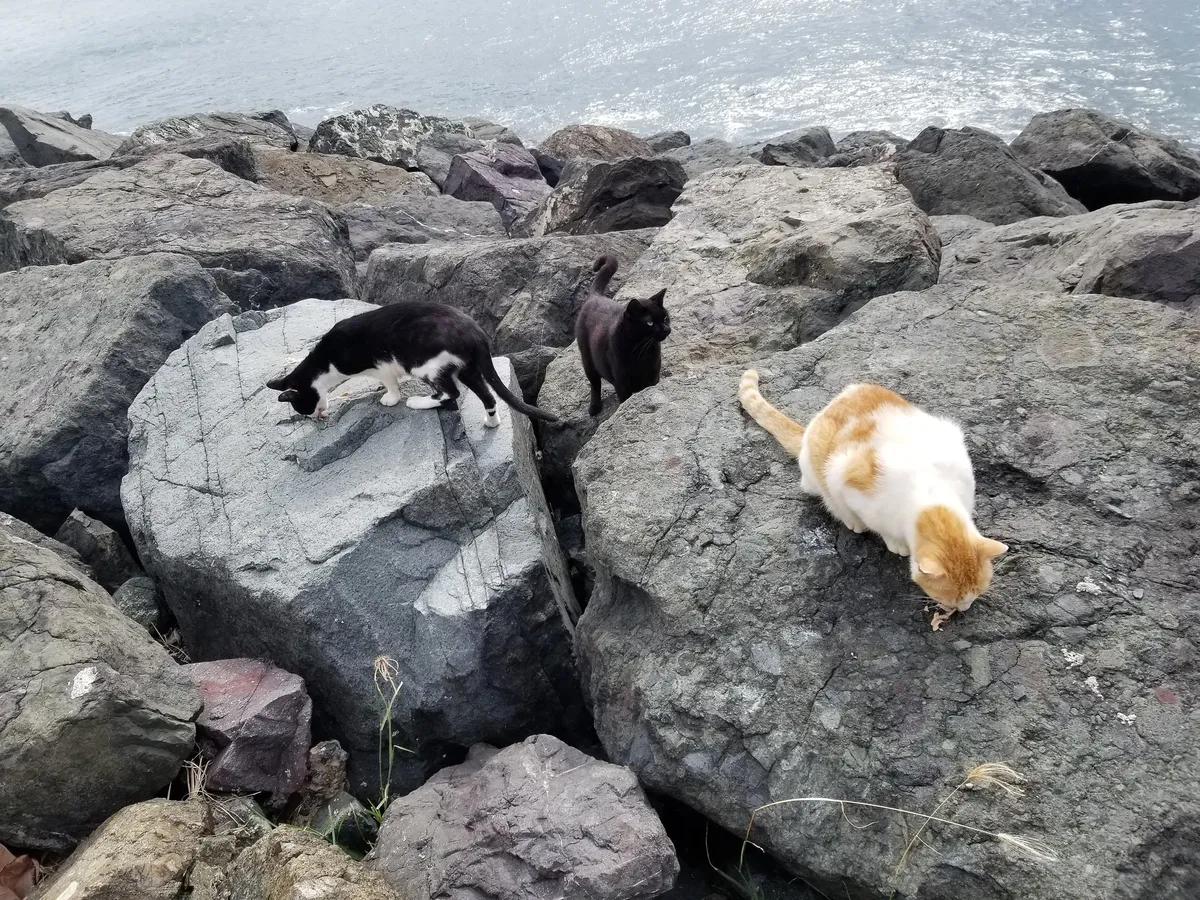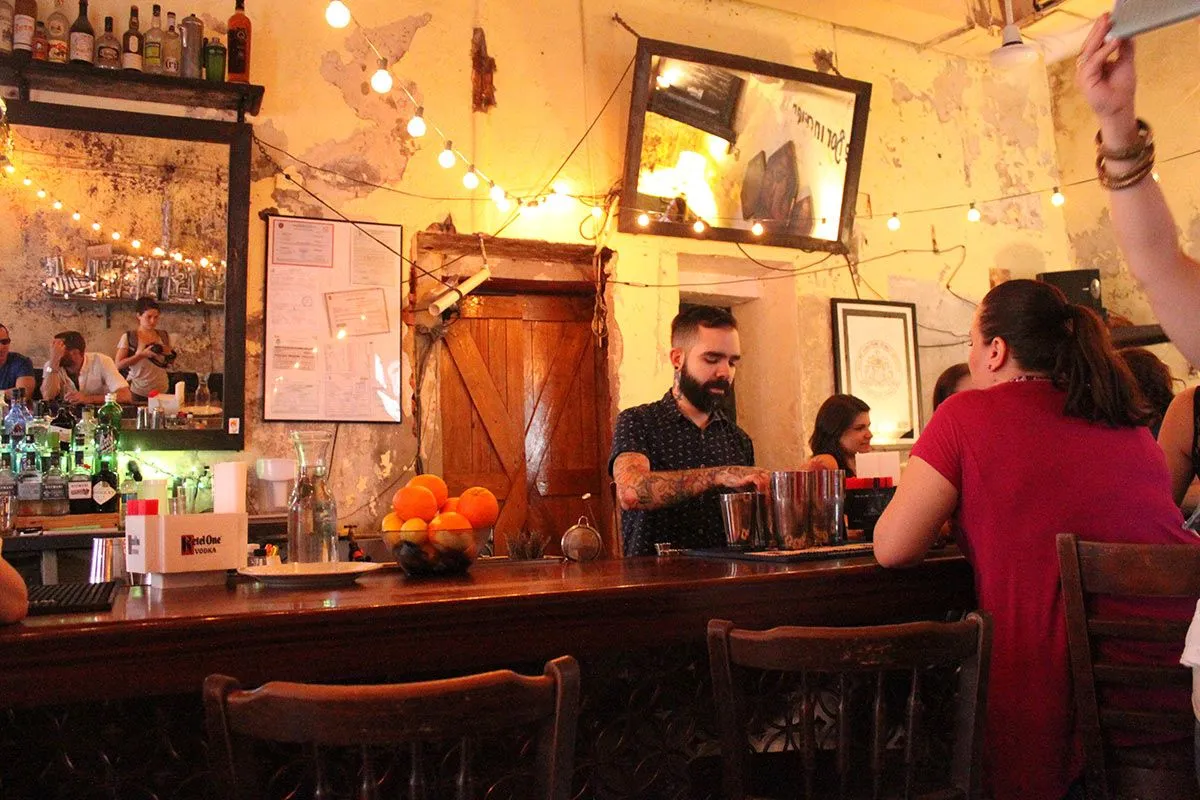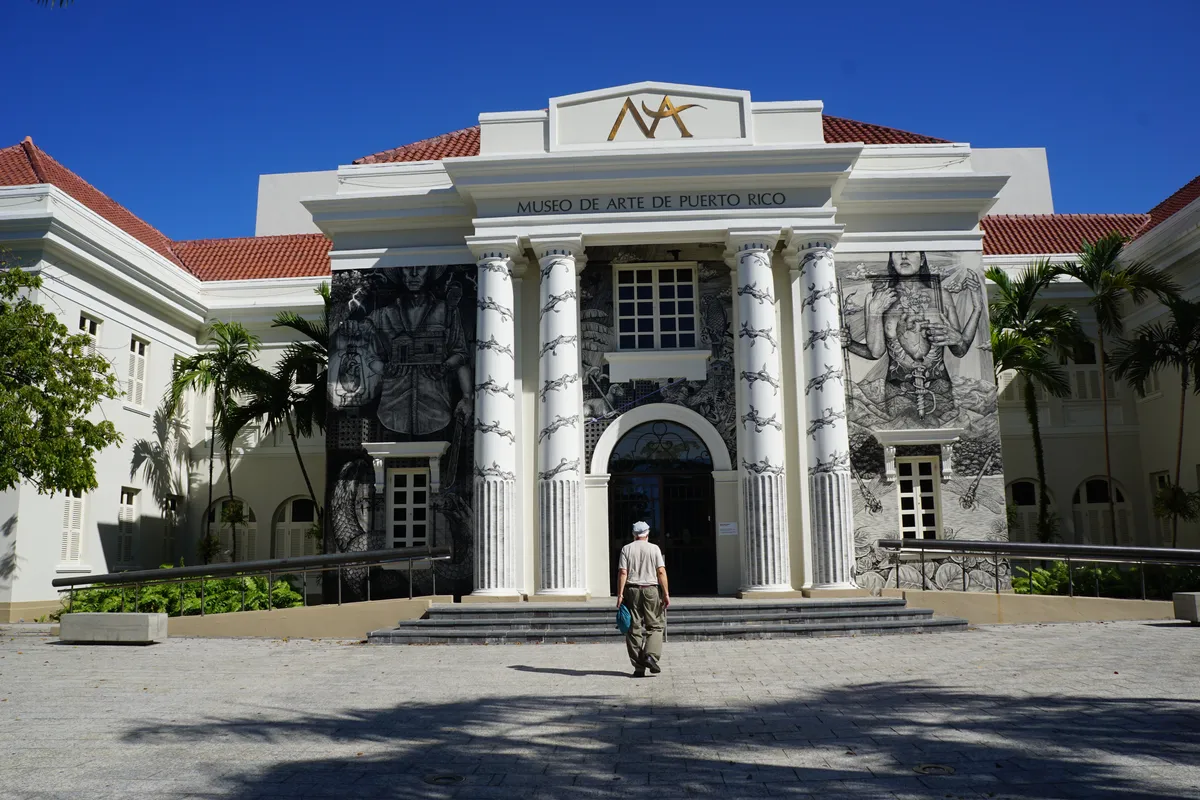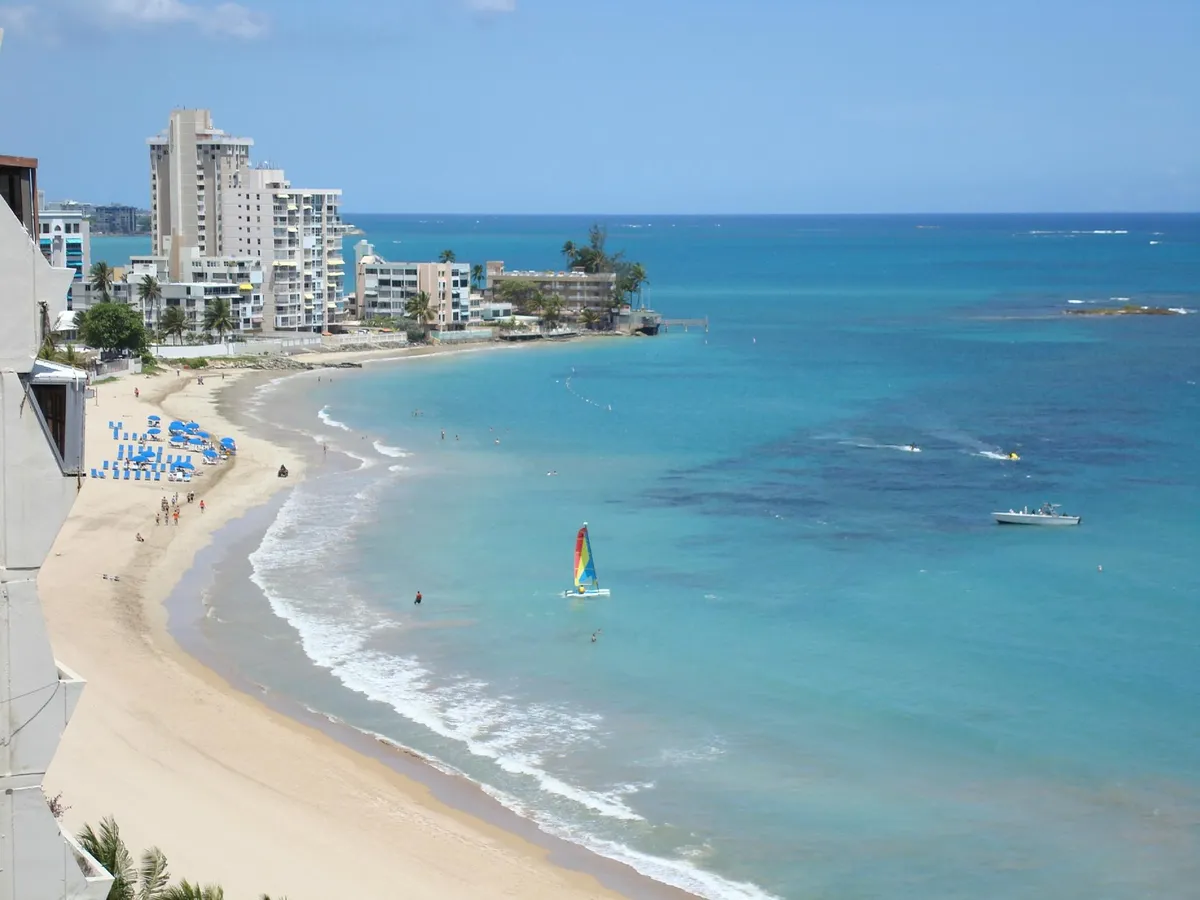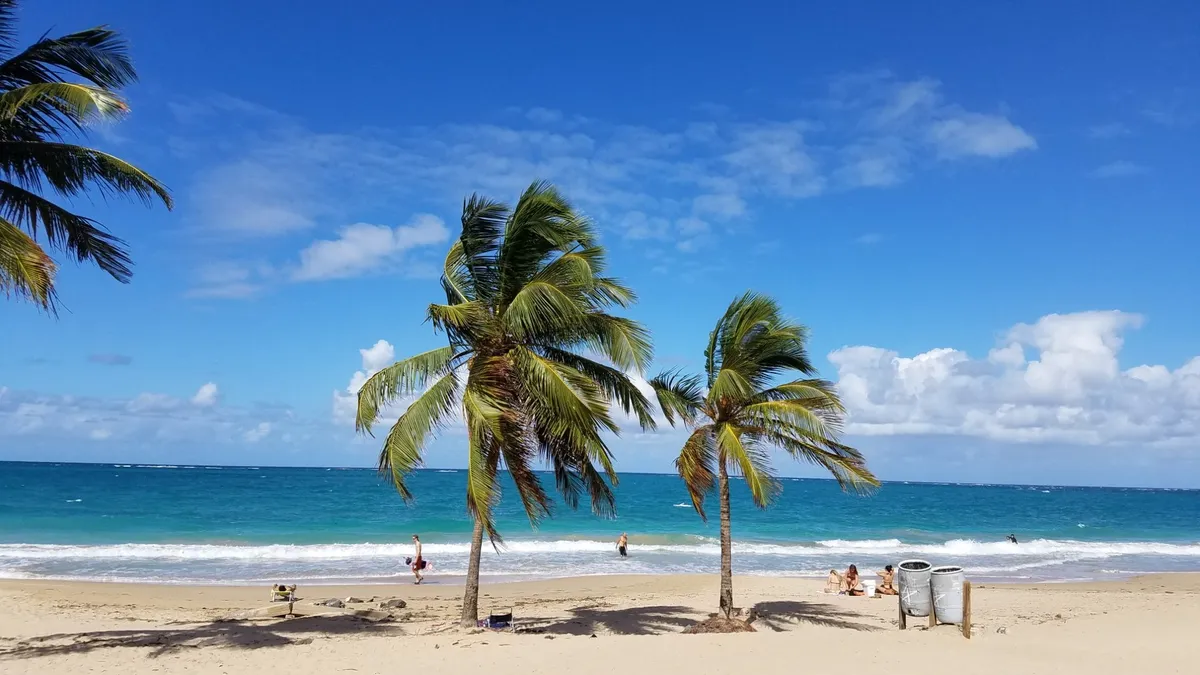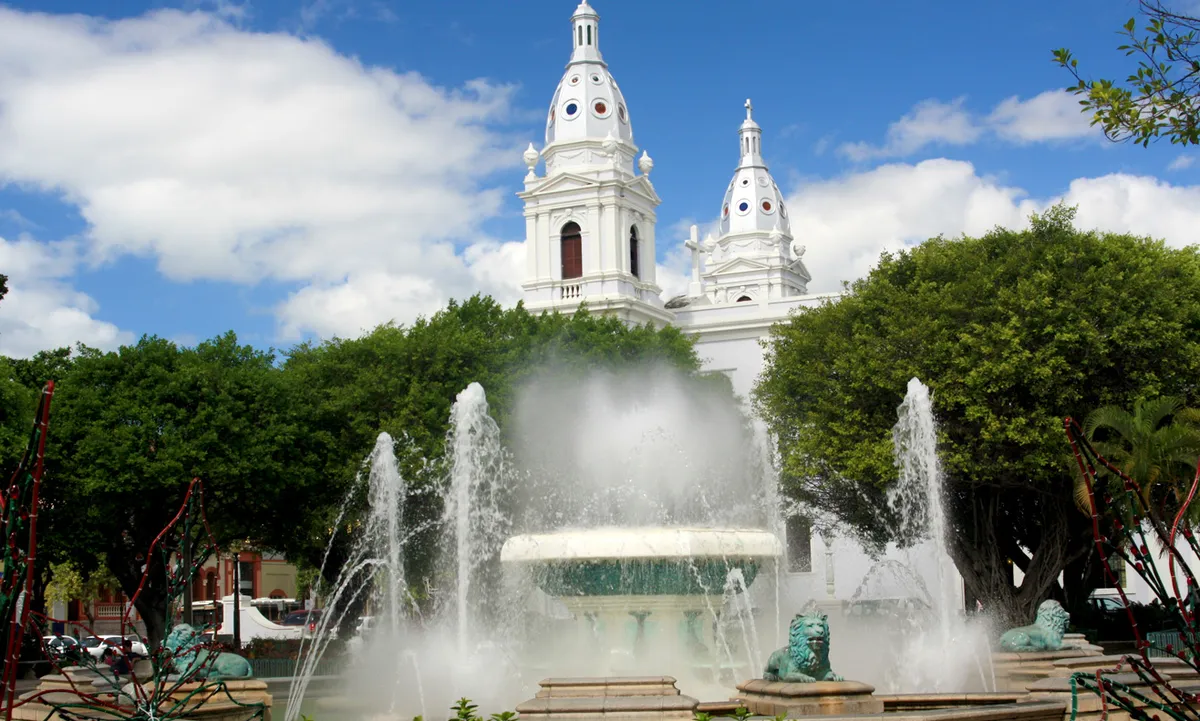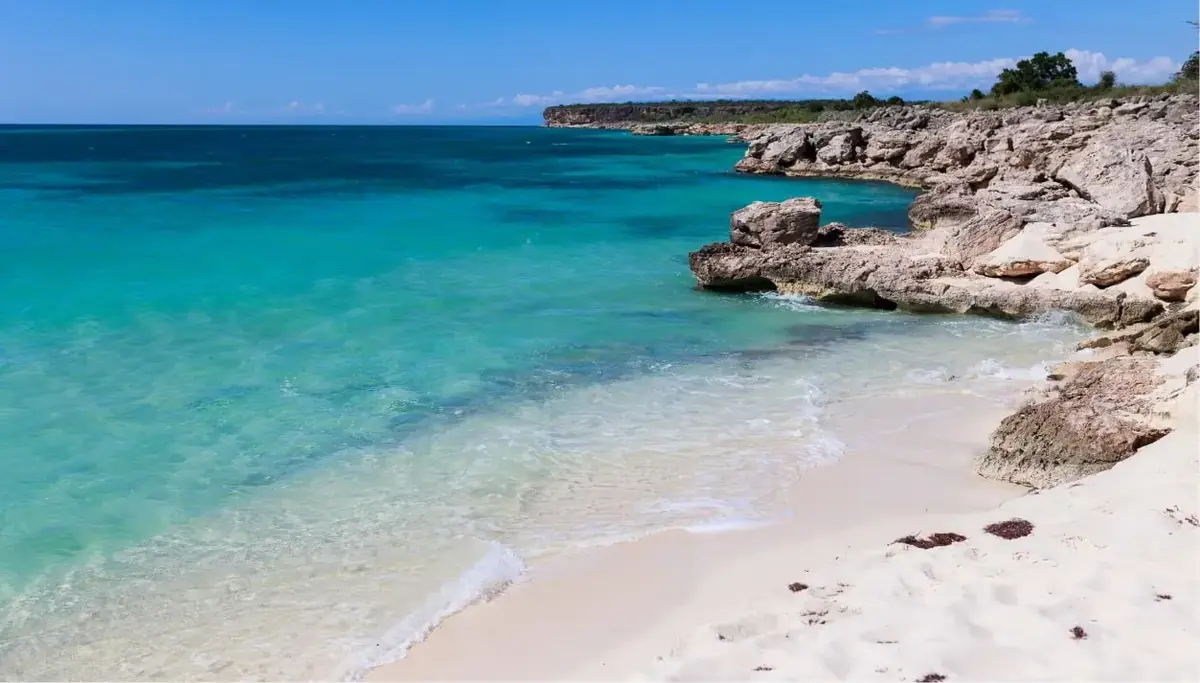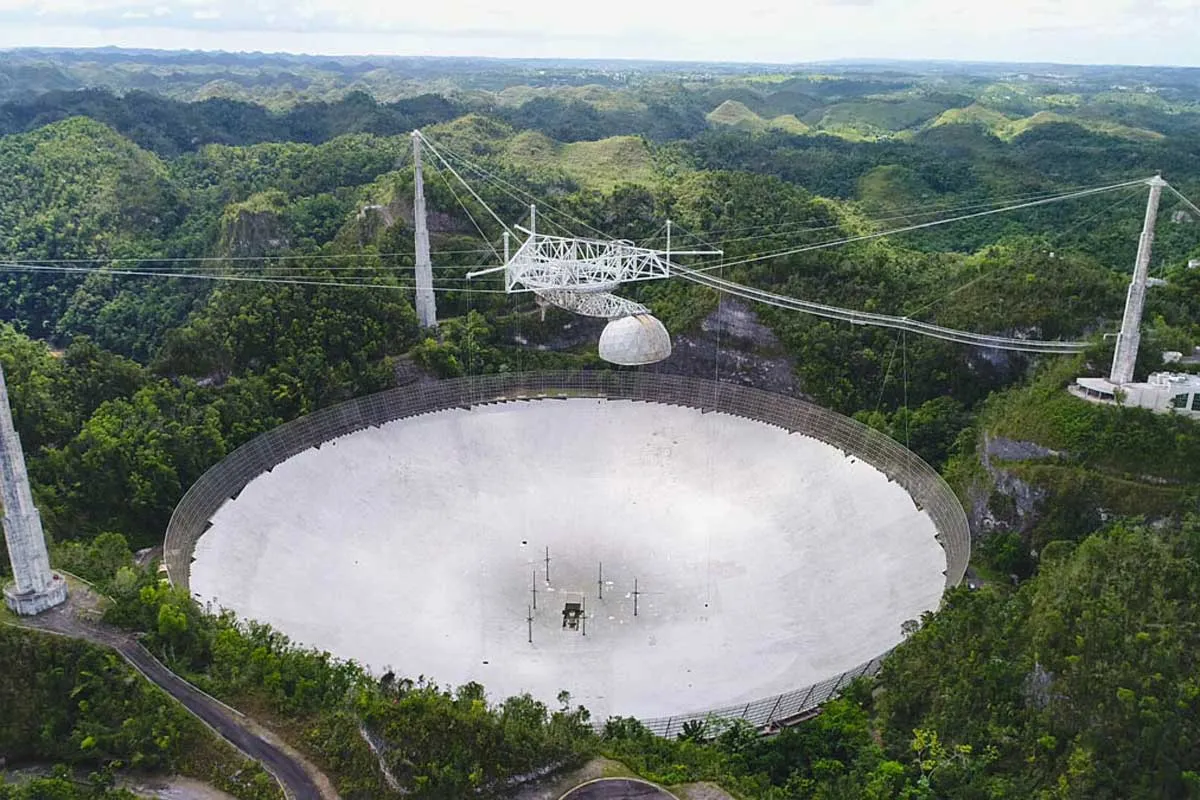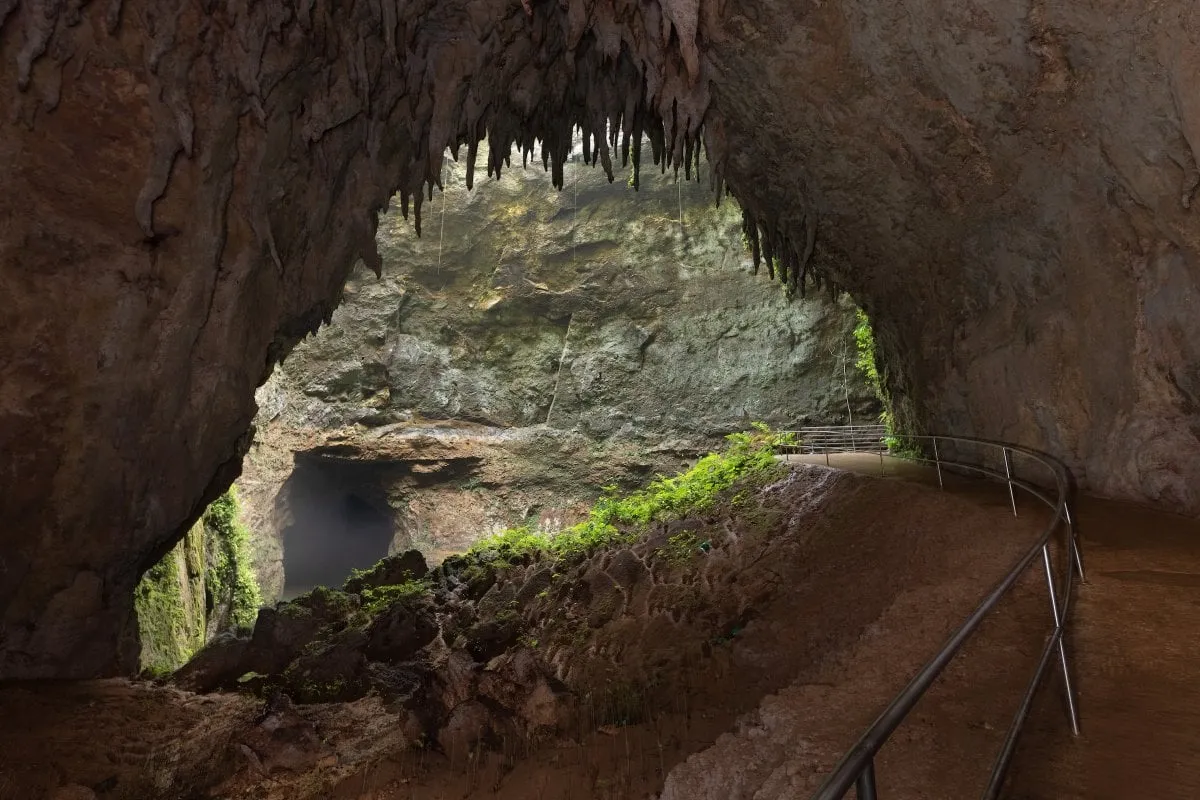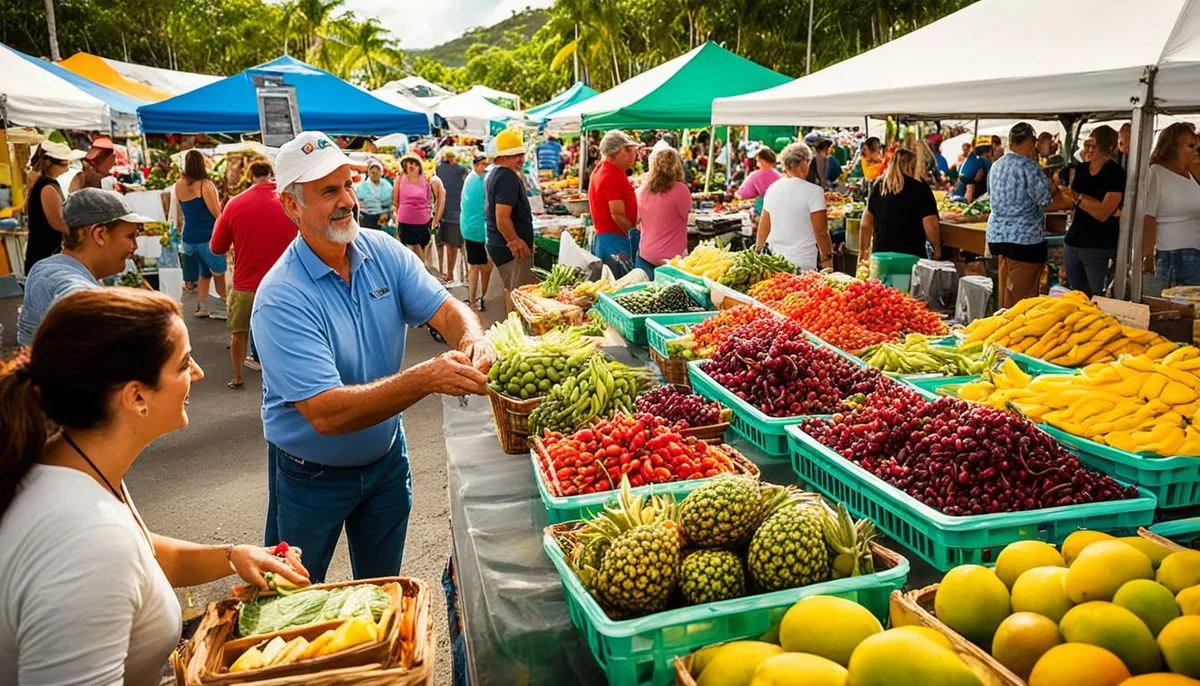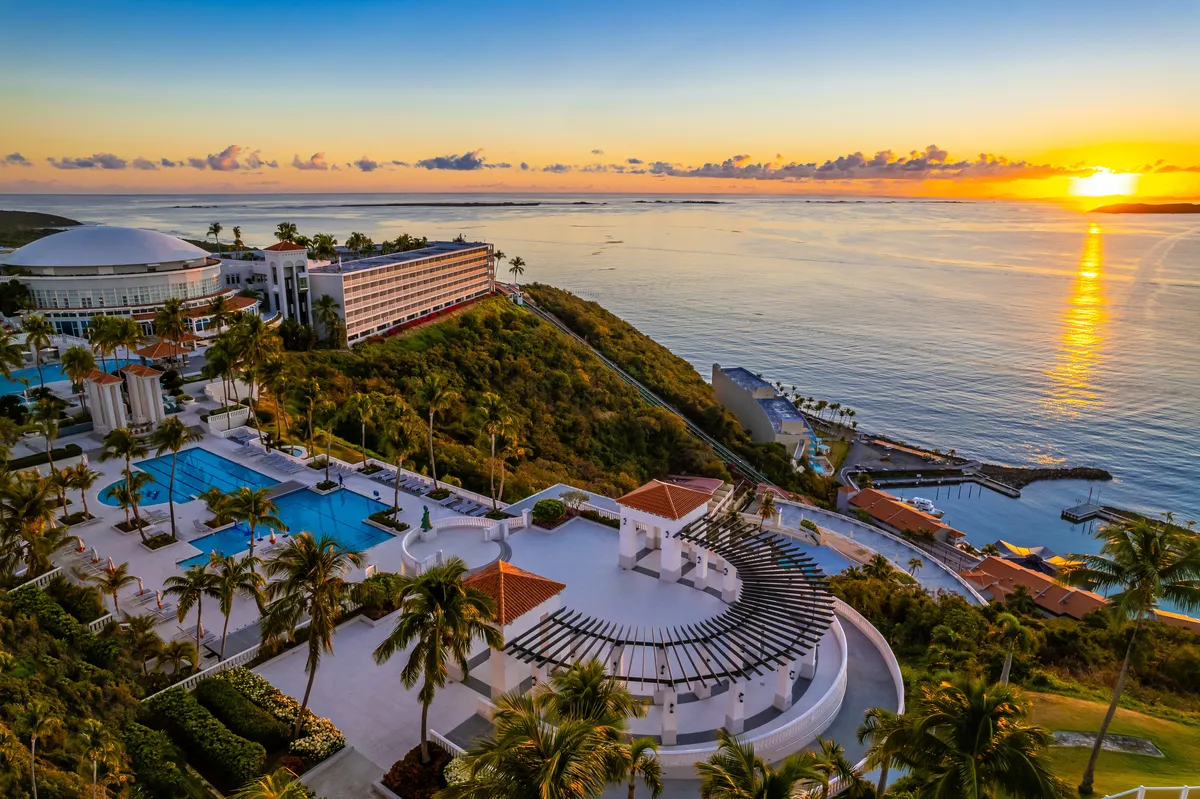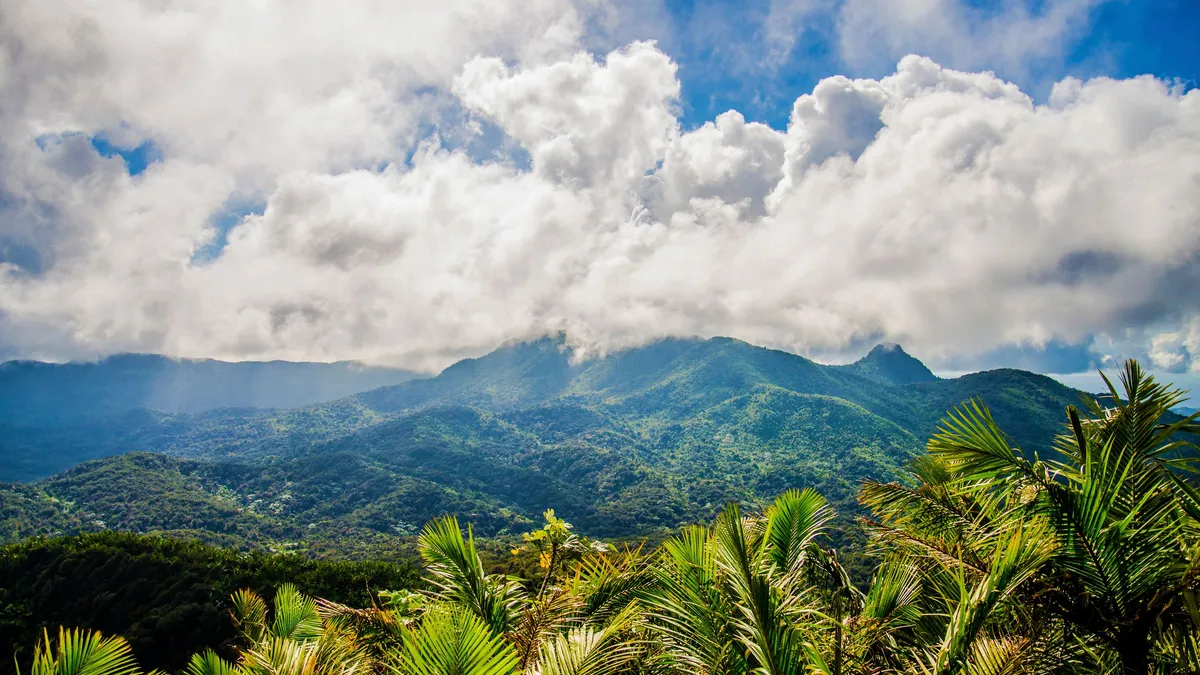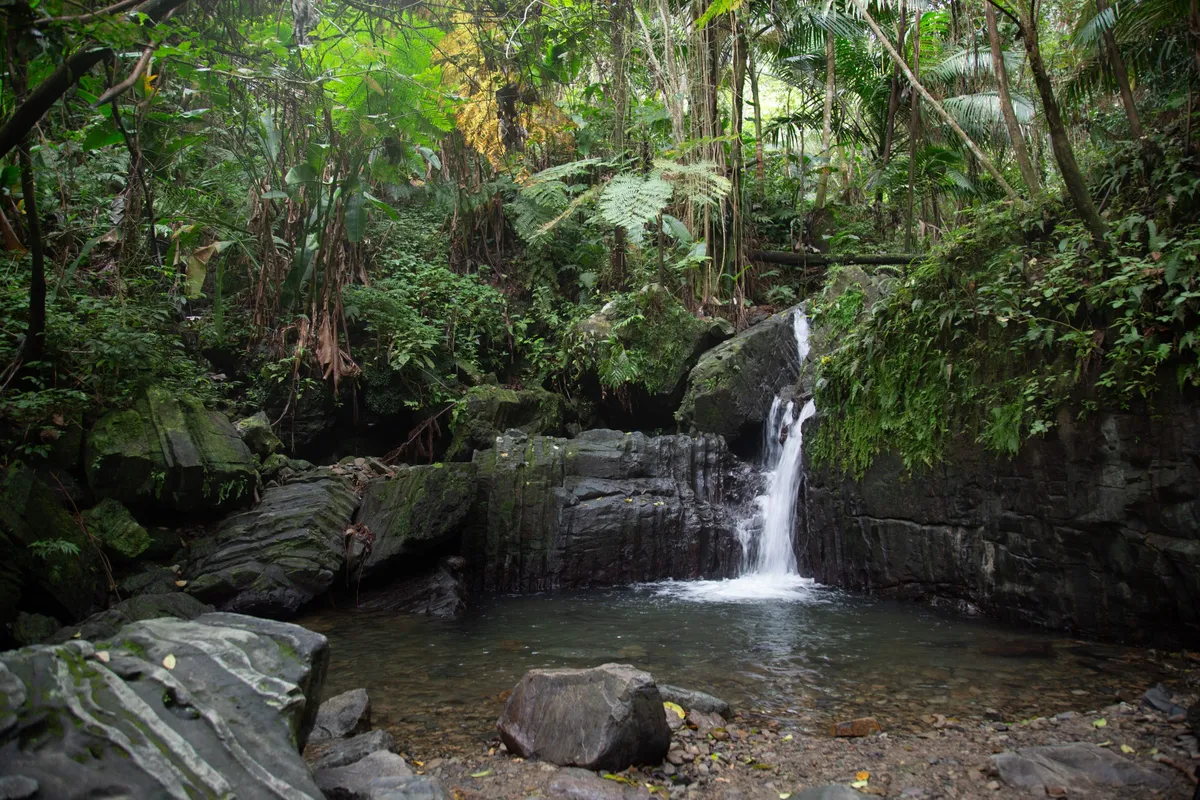After more than a decade of exploring this Caribbean paradise, I can tell you that the best Puerto Rico attractions go far beyond beautiful beaches and rum cocktails. From the moment I first stepped off the plane in San Juan and heard the melodic chorus of tiny coquí frogs, I knew this island was something special. You’re about to discover a sun-kissed destination where 500-year-old Spanish forts stand alongside bioluminescent bays, where tropical rainforests meet world-class beaches, and where every roadside food stand serves up culinary magic. This guide shares the real experiences—the ones that turned my trips into stories I’ve been telling for years—complete with practical advice, insider tips, and honest assessments to help you craft your own Puerto Rican adventure.
1. Castillo San Felipe del Morro: Iconic Fortress with Atlantic Views
Perched on a dramatic headland overlooking the Atlantic Ocean, El Morro is where Puerto Rico’s story truly begins. This six-level fortress dating back to 1539 was designed to repel sea attacks, and walking through its labyrinth of dungeons, barracks, and ramps feels like stepping back through centuries of Caribbean history. I spent two hours on my first visit just watching kites fly on the massive green lawn, feeling the weight of history beneath my feet while original cannons still face the ocean.
What makes it special
The fortress is part of the San Juan National Historic Site and offers some of the most photographed views in Puerto Rico. As one traveler perfectly described it, the “beautiful views are well worth the hike” up the hill to the entrance. The strategic location that made it crucial for defending San Juan Bay now provides visitors with stunning vistas where the fortress walls meet the crashing Atlantic waves.
Practical information
- Location: Old San Juan, San Juan
- Hours: Daily 9 AM to 5 PM
- Cost: Around $10 (grants access to both El Morro and San Cristóbal for a full week)
- Best time to visit: Late afternoon for golden hour photography
- Website: National Park Service – San Juan National Historic Site
- Getting there: El Morro is easily accessible by foot from anywhere in Old San Juan, though be prepared for the uphill walk. The cobblestones can be slick when wet, so wear sturdy shoes.
The fortress delivers on history and views, making it an absolute must-see for first-time visitors. However, it can get crowded during cruise ship days, and there’s limited shade on the lawn area. U.S. National Parks passes are accepted for entry, which many visitors don’t realize.
2. Castillo San Cristóbal: Largest Spanish Fort in the Americas
Don’t make the mistake of skipping San Cristóbal just because you visited El Morro. This 27-acre fortress is actually bigger than its more famous neighbor and offers a completely different experience. Built to protect the city from land-based attacks, this is the largest Spanish fort ever constructed in the New World. Exploring its five interconnected units, moats, and tunnels gives you a true sense of Old San Juan’s strategic military importance.
What makes it special
The fortress features the famous Garita del Diablo (Devil’s Sentry Box), a lone watchtower hanging dramatically over the ocean. Local legends tell of soldiers who mysteriously vanished from this post, adding an air of mystery to your exploration. The sheer scale of the military engineering becomes apparent as you wander through the complex defense system.
Practical information
- Location: Old San Juan, San Juan
- Hours: Daily 9 AM to 5 PM
- Cost: Included with El Morro ticket ($10 for both forts, valid one week)
- Best time to visit: Morning hours before tour groups arrive
- Pro tip: Bring your walking shoes—the fortress is massive.
- Getting there: Located on the opposite end of Old San Juan from El Morro, accessible by foot or a short taxi ride from most hotels in the area.
This fort impresses with its scale and fascinating military architecture, offering excellent photo opportunities and fewer crowds than El Morro. The main challenge is the amount of walking required—wear comfortable shoes and bring water, especially during the summer months.
3. Old San Juan Streets: A Living Museum of Colonial Architecture
Beyond the forts, the true magic of Old San Juan lies in simply wandering its historic streets. This UNESCO World Heritage Site is the oldest city in the United States, and every blue cobblestone (adoquines, originally brought as ballast on Spanish ships) and pastel colonial facade tells a 500-year story. The sensory experience is intoxicating: salsa music drifting from bars like the multi-room La Factoría, the shimmer of those famous blue stones, and the vibrant colors of the Spanish colonial buildings. Exploring these streets is one of the most essential things to do in Puerto Rico.
Key landmarks you’ll discover
Paseo de la Princesa offers a beautifully restored 19th-century promenade adorned with ornate streetlamps and fountains, culminating in the stunning Raíces Fountain. On Sundays, local vendors, artisans, and even seniors dancing salsa bring the promenade to life. Calle Fortaleza features a massive Puerto Rican flag installation that’s become one of the city’s most photographed spots. The Catedral de San Juan Bautista, the second oldest cathedral in the Americas, holds the tomb of Spanish explorer Juan Ponce de León. La Fortaleza’s iconic blue and white facade marks the oldest executive mansion in continuous use in the New World.
Practical information
- Location: Old San Juan neighborhood, San Juan
- Cost: Free to explore
- Best time to visit: Early morning or late afternoon to avoid heat and cruise ship crowds
- Pro tip: Wear comfortable, sturdy shoes—the streets are hilly and cobblestones get incredibly slick when wet.
- Getting around: The historic district is compact and walkable, though the hills can be challenging. Many hotels offer free trolley services, or you can use rideshare apps.
One of my favorite activities is wandering without a map—you’ll stumble upon hidden plazas, the famous Old San Juan cats sunning themselves (many cared for by the non-profit Save a Gato), and the perfect little café for strong Puerto Rican coffee. The concentration of tourism around cruise ship ports has led to heavy commercialization in some areas, which can feel overwhelming during peak hours. Restaurants and shops closest to the docks tend to be pricier and less authentic than those tucked into quieter streets.
4. Santurce Neighborhood: Modern Art and Authentic Culture
Just a 20-minute drive from Old San Juan’s preserved history lies its modern, creative soul: Santurce. While tourists flock to the cruise ports, this neighborhood has flourished as an authentic hub for contemporary local culture, offering a refreshing contrast to Old San Juan’s commercialization.
What makes it special
Thanks to the annual Santurce es Ley street art festival, the entire neighborhood has become an open-air art gallery. Building facades serve as massive canvases for world-renowned muralists, with the best work concentrated in the areas of Tras Talleres and El Gandul. The neighborhood is also home to the Museo de Arte de Puerto Rico and the more experimental Museo de Arte Contemporáneo, Puerto Rico’s premier art institutions.
La Placita de Santurce experience
The undisputed heart of Santurce has a “split personality” that perfectly captures Puerto Rico’s dual nature. By day, La Placita functions as a traditional plaza del mercado (market square) where farmers sell fresh produce. But on weekend nights, the entire area transforms into a massive, vibrant block party. The streets fill with people, live music pours from every bar, and the air buzzes with infectious energy—an absolute must-do for an authentic local experience.
Practical information
- Location: Santurce neighborhood, San Juan metropolitan area
- Best time to visit: Weekend nights for La Placita’s block party atmosphere
- Cost: Free to explore; museum entries vary
- Transportation: Short Uber/taxi ride from Old San Juan or Condado hotels
Santurce delivers the authentic local culture that many visitors crave, with world-class street art and a genuine neighborhood vibe that feels miles away from tourist traps. The main consideration is safety—while the main areas around La Placita and the museums are generally safe, use the same urban awareness you would in any city neighborhood. Stick to well-lit, populated areas at night.
5. El Yunque National Forest: The Only Tropical Rainforest in the U.S.
The air changes the moment you enter El Yunque. It becomes cooler, thick with humidity, and scented with damp earth and flowers. The soundtrack shifts to a symphony of dripping leaves, rushing water, and the ever-present ‘ko-kee, ko-kee’ of the native coquí frog. As the only tropical rainforest in the U.S. National Forest System, El Yunque is home to over 240 types of trees and hundreds of animal species, making it one of the most unique Puerto Rico attractions.
Essential experiences
La Coca Falls provides an easy, perfect photo stop—an 85-foot cascade tumbling onto giant boulders right beside road PR-191, visible shortly after entering the main gate. Yokahú Tower, a 1930s observation tower, offers breathtaking 360-degree views after climbing its spiral staircase. You can see the green canopy stretching all the way to the blue ocean on the coast—absolutely worth the climb. Juan Diego Creek features a very short trail leading to small waterfalls and natural pools perfect for a refreshing swim, though its accessibility means it gets very crowded, especially midday.
Practical information
- Location: Near Río Grande, about 45 minutes east of San Juan
- Hours: Recreational areas generally open from dawn to dusk
- Cost: Free entry (as of April 2025, no reservations required)
- Best time to visit: Arrive before 9 AM to secure parking
- Website: El Yunque National Forest – USDA Forest Service
- What to bring: Light rain jacket (it’s a rainforest!), proper footwear with good grip (trails get incredibly slippery), and bags for your trash—El Yunque is a pack-in, pack-out facility with no trash cans in recreational areas.
The rainforest delivers an otherworldly experience unlike anywhere else in the U.S., with manageable trails suitable for various fitness levels. Based on countless traveler reviews, the biggest challenge is parking. The park actively manages visitor capacity, and arriving after 10 AM often means you won’t find a spot and will have to turn around. Additionally, be prepared for sudden rain showers and slippery conditions, even on paved trails.
6. Mosquito Bay (Vieques): Brightest Bioluminescent Bay in the World
Is the bio bay experience worth it? After countless visits, my answer is an emphatic yes—but only if you do it right. Mosquito Bay in Vieques holds the Guinness World Record as the brightest bioluminescent bay in the world. When conditions align, it’s the most magical, surreal experience you’ll have in Puerto Rico. The water is filled with microscopic dinoflagellates that emit a brilliant blue-green light when disturbed, turning every paddle stroke into a trail of liquid stars.
What makes it special
The sheer density of dinoflagellates in Mosquito Bay is unmatched anywhere else on the planet. When you dip your hand in the water, glowing droplets cascade from your fingers like fairy dust. Fish darting below leave luminous trails. Your kayak creates a glowing wake. It genuinely feels like paddling through a science fiction movie.
Practical information
- Location: Vieques Island (requires a ferry or flight from the main island)
- Tour type: Kayaking only (motorboats are prohibited to protect the ecosystem)
- Cost: Tours typically cost $50-$75 per person
- Best time to visit: New moon nights for minimal light pollution
- Pro tip: Book tours at least a week in advance, especially during peak season.
- Getting to Vieques: A small plane from San Juan (SJU) or Ceiba (RVR) is quickest but pricey. The more economical public ferry from Ceiba requires booking tickets well in advance online—they sell out quickly, and day-of purchases are nearly impossible.
This is the undisputed champion of bio bay experiences and absolutely worth the extra effort. The trip requires an overnight stay on Vieques, adding to your trip’s cost and planning complexity. Weather and moon phase dramatically affect the brightness—a cloudy night or full moon will significantly diminish the effect. But when conditions are right, it’s a world-class natural light show you’ll never forget.
7. Laguna Grande (Fajardo): Most Accessible Bioluminescent Experience
If you can’t make it to Vieques but still want to witness the bioluminescent magic, Laguna Grande in Fajardo is your best alternative. Located just an hour’s drive from San Juan, this is the most popular and accessible bio bay in Puerto Rico. The experience involves kayaking through a narrow, winding mangrove channel that eventually opens into a large, protected lagoon where the water glows.
What makes it special
The journey through the dark mangrove tunnel builds anticipation before you emerge into the glowing lagoon. The bay is genuinely bright on good nights—while not as intense as Mosquito Bay, it still creates that magical effect of glowing water and sparkling trails.
Practical information
- Location: Fajardo, northeast Puerto Rico (Las Croabas area)
- Tour duration: Approximately 2 hours
- Cost: Tours typically cost $40-$65 per person
- Best time to visit: New moon nights, clear weather
- Transportation: Easy drive from San Juan, or many tour companies offer pickup.
Its convenience comes with a trade-off: Laguna Grande can get very crowded with multiple tour groups kayaking through the narrow mangrove channel simultaneously, which some visitors find chaotic and distracting. The brightness is noticeably less intense than Mosquito Bay, and during a full moon or cloudy conditions, the glow can be underwhelming. However, if your time in Puerto Rico is limited and you want to check the bio bay experience off your list without the complexity of getting to Vieques, this is a solid choice.
8. Toro Verde Adventure Park: Home of “The Monster” Zipline
If soaring over mountain canyons at 95 mph sounds like your idea of fun, Toro Verde Adventure Park in the central mountains is calling your name. This is Puerto Rico’s premier adventure park, famous for its record-breaking ziplines, including “The Monster”—one of the longest ziplines in the world at 1.5 miles.
What makes it special
Picture this: you’re lying face-down in a Superman-style harness, about to fly across a canyon with stunning views of Puerto Rico’s lush green mountains stretching in every direction. The adrenaline rush is incredible, and the perspective you get of the island’s mountainous interior is unlike anything else. The park offers multiple zipline options, from the extreme Monster to more moderate lines suitable for first-timers.
Practical information
- Location: Orocovis, central mountains (90 minutes to 2 hours from San Juan)
- Cost: Varies by zipline package ($70-$150)
- Requirements: Specific weight and height restrictions apply; closed-toe shoes are mandatory.
- Best time to visit: Mornings for clearer weather
- Booking: Advanced reservations are required.
- Getting there: A rental car is recommended as the park is in a remote mountain location with limited public transportation.
Toro Verde delivers an unforgettable adrenaline experience with some of the most unique views of Puerto Rico’s interior. The main considerations are the drive time (winding mountain roads can be slow), weather dependency (tours cancel in heavy rain or high winds), and physical requirements (weight limits of 80-250 lbs for most ziplines). Some visitors find the safety briefing and setup time lengthy, but it’s necessary for this type of extreme activity.
9. Flamenco Beach (Culebra): A World-Famous Beach Paradise
Let’s be clear: Flamenco Beach lives up to every bit of the hype. Consistently ranked among the best beaches in the world, this is a near-perfect crescent of powder-soft white sand stretching for a mile around a sheltered, horseshoe-shaped bay. The water is calm, crystal-clear, and shifts through countless shades of turquoise that seem almost unreal.
What makes it unique
One of Flamenco’s most iconic features is the pair of rust-colored M4 Sherman tanks left behind after the U.S. Navy ceased military exercises on Culebra in the 1970s. Now covered in colorful, evolving graffiti, they serve as a powerful symbol of peace and create a one-of-a-kind photo opportunity that’s pure Puerto Rico.
Practical information
- Location: Culebra Island (requires a ferry or flight from the main island)
- Facilities: Bathrooms, showers, food kiosks, and camping areas are available.
- Cost: Free beach access; parking is $3-$5.
- Best time to visit: Weekdays to avoid weekend crowds
- Pro tip: Walk to the far ends of the beach to escape day-tripper crowds and find the best snorkeling spots.
- Getting there: A small plane from San Juan (SJU) or Ceiba (RVR) offers scenic flights but at premium prices. The public ferry from Ceiba is more economical—book tickets well in advance online through the official vendor as they sell out quickly.
Flamenco delivers on its reputation with pristine sand, clear water, and stunning natural beauty that justifies the travel effort. The challenges are all logistical: getting to Culebra requires planning and patience (ferry schedules can be unpredictable), the beach gets crowded during peak season and weekends, and facilities are basic. Most visitors find a day trip too rushed and recommend staying overnight on Culebra to fully enjoy the beach and island.
10. Rincón: Surf Capital with Legendary Sunsets
On Puerto Rico’s west coast facing the Mona Passage, Rincón has carved out a unique identity as the Caribbean’s undisputed surf capital. The geography here creates world-class waves that have attracted an international surf community, giving the town a distinct laid-back, “hippie surfer” vibe that feels different from anywhere else on the island.
What makes it special
Beyond the legendary surf breaks at beaches like Domes Beach and Maria’s Beach, Rincón offers two other spectacular attractions. Being on the west coast, it boasts the most incredible sunsets on the main island—a daily ritual that locals and visitors gather to watch. From mid-January through March, Rincón becomes a prime destination for humpback whale watching, with regular sightings of these magnificent creatures from the shore and on boat tours.
Practical information
- Location: Northwest coast, about 2 hours from San Juan
- Best time to visit: Winter months (December-March) for the best surf and whale watching
- Accommodation: A mix of surf hostels, vacation rentals, and boutique hotels
- Surf lessons: Available at Sandy Beach for beginners ($60-$80)
- Pro tip: Book accommodations well in advance for whale watching season.
The town delivers amazing food, consistent surf, beautiful sunsets, and a relaxed atmosphere perfect for unwinding. However, it has become a popular expat enclave, creating a culture that may not feel as traditionally Puerto Rican as other parts of the island. Some visitors seeking authentic Boricua culture find the heavy expat influence disappointing. The beaches also have rougher surf conditions that aren’t ideal for families with young children.
11. Luquillo Beach and the Kiosks: The Perfect Family Beach Day
This is the perfect, easy day trip from San Juan that combines natural beauty with incredible food. Luquillo Beach offers a calm, palm-lined crescent of golden sand with gentle waves ideal for families. What sets it apart is the immediate proximity to the famous Luquillo Kiosks—a row of about 60 local food stalls just steps from the sand.
What makes it special
Imagine swimming in warm Caribbean water, then walking directly to dozens of food options serving everything from fresh seafood to traditional fritters, strong cocktails to fresh fruit smoothies. This combination of a beautiful beach with authentic local cuisine creates an experience that’s both relaxing and culturally immersive. It’s especially popular with Puerto Rican families on weekends, giving it a genuine local atmosphere.
Practical information
- Location: Luquillo, northeast coast (about 45 minutes east of San Juan)
- Facilities: Bathrooms, showers, lifeguards, parking
- Cost: Parking is around $5.
- Best time to visit: Weekdays for fewer crowds; often combined with El Yunque visits.
- Kiosks hours: Most are open from 11 AM to 8 PM, some later on weekends.
- Getting there: Easy drive from San Juan on highway PR-3, or many tour companies offer combined El Yunque and Luquillo day trips.
Luquillo delivers a quintessential Puerto Rican beach experience with excellent facilities, calm waters perfect for swimming, and unbeatable food options. The beach can get very crowded on weekends and holidays, with limited parking filling up early. The kiosks, while delicious, vary significantly in quality—some are tourist-oriented with higher prices, while others cater more to locals with better value and food quality.
12. Crash Boat Beach (Aguadilla): Colorful Pier and Excellent Snorkeling
On Puerto Rico’s northwest coast, Crash Boat Beach is a vibrant, bustling beach beloved by locals. Named after the rescue boats that were stationed here during World War II, this beach has a distinctive character that sets it apart from more tourist-oriented options.
What makes it special
The iconic, brightly colored pier is the beach’s most recognizable feature and a popular spot for jumping into the clear water below. The snorkeling right off the beach is excellent, with good visibility and diverse marine life. The beach attracts a young, energetic local crowd, especially on weekends, creating a lively social atmosphere.
Practical information
- Location: Aguadilla, northwest coast (about 2 hours from San Juan)
- Facilities: Bathrooms, outdoor showers, food vendors
- Cost: Free entry; parking is $3-$5.
- Best time to visit: Mornings for calmer water and better snorkeling
- Snorkeling: Best around the pier and rocky areas on the left side.
- What to bring: Your own snorkeling gear (rentals sometimes available but not always reliable), reef-safe sunscreen, and cash for parking and food vendors.
Crash Boat offers a genuine local beach experience with great snorkeling, beautiful clear water, and the unique pier feature. The current can be strong on certain days, making it less suitable for weak swimmers or young children. The beach has limited shade, so arrive early to claim a spot under the trees. Like many popular local beaches, weekends can get crowded and occasionally rowdy with loud music and parties.
13. Cayo Icacos: An Uninhabited Island Paradise
For a true “deserted island” fantasy, a catamaran day trip to Cayo Icacos delivers exactly that. This uninhabited cay, part of a nature reserve off the coast of Fajardo, has no facilities, no buildings, and no crowds—just pristine white sand and crystalline water that looks too perfect to be real.
What makes it special
The boat trip itself is a huge part of the experience and often includes lunch, drinks, and a snorkeling stop at additional locations. Many tour operators provide a festive, party-boat atmosphere with music and an open bar, while others offer a more relaxed, intimate setting. Once you arrive at Cayo Icacos, you’re free to explore the small island, snorkel the surrounding waters, or simply lounge on arguably some of the most beautiful beach sand in Puerto Rico.
Practical information
- Location: Off the coast of Fajardo (boat departure point)
- Tour duration: Full day (typically 6-8 hours)
- Cost: $65-$120 per person, usually includes lunch and drinks
- Best time to visit: Year-round, but winter months have the calmest seas
- Booking: Reserve in advance, especially during peak season.
- Tour operators: Multiple companies offer trips, including catamaran and powerboat options from Fajardo.
The excursion provides a fantastic full-day experience with beautiful scenery, snorkeling opportunities, and the novelty of visiting an uninhabited island. The main variables are weather (rough seas can make the boat ride uncomfortable and sometimes cause cancellations) and tour group dynamics. Read recent reviews of specific tour operators before booking, as quality varies significantly.
14. La Ruta del Lechón (Guavate): The Ultimate Pork Pilgrimage
Deep in the central mountains, about an hour south of San Juan, road PR-184 is famously known as La Ruta del Lechón, or the “Pork Highway.” This isn’t just a meal—it’s a cultural pilgrimage to experience one of Puerto Rico’s most iconic dishes: lechón asado, a whole pig slow-roasted on a spit for hours until the skin is perfectly crispy and the meat is impossibly tender.
What makes it special
While you can visit any day, the highway truly comes alive on weekends. The air fills with live salsa and merengue music, families gather at large communal tables, and the atmosphere is pure celebration. Visiting a lechonera like El Rancho Original or Lechonera El Mojito on a Saturday or Sunday isn’t just having a meal—it’s a full-blown immersion into Puerto Rican culinary culture and family traditions.
Practical information
- Location: Guavate area, central mountains (Highway PR-184)
- Best time to visit: Saturday or Sunday for the full experience with live music
- Cost: Expect to pay $15-$25 per person for generous portions.
- Hours: Most lechoneras open around 11 AM until they run out (often by early evening on weekends).
- Pro tip: Arrive by 1 PM on weekends to ensure they haven’t sold out.
- Getting there: A rental car is strongly recommended. The winding mountain road is part of the adventure, offering beautiful views of the island’s interior.
La Ruta del Lechón delivers an authentic, memorable cultural and culinary experience that you simply can’t get at any restaurant in San Juan. The lechón is legitimately delicious, and the festive atmosphere on weekends creates lasting memories. The challenges are purely practical: it’s a significant drive from San Juan on mountain roads, the scene can feel overwhelming for introverts, and if you arrive late on weekends, popular spots may have sold out.
15. Piñones: Authentic Afro-Caribbean Street Food
Located just minutes from the San Juan airport along the northeastern coast, Piñones offers a completely different culinary experience from the mountain lechoneras. This coastal area is a hub of Afro-Caribbean culture and the go-to spot for traditional street food served from small shacks called chinchorros.
What makes it special
A boardwalk and road run along the beach, lined with dozens of chinchorros where you can watch your food being cooked in traditional fogónes (cauldrons). The specialty here is frituras—a huge variety of fried snacks including alcapurrias (fritters made from taro root and plantain masa, often stuffed with crabmeat or ground beef) and bacalaítos (large, crispy codfish fritters). Wash it all down with coconut water served straight from the coconut.
Practical information
- Location: Piñones, between San Juan airport and Loíza
- Best time to visit: Late afternoon or early evening
- Cost: Very budget-friendly, $2-$5 per item
- Hours: Most kiosks are open in the afternoons and evenings, and are busiest on weekends.
- Pro tip: Bring cash—many places don’t accept cards.
- Getting there: An easy 15-20 minute drive from San Juan or Isla Verde hotels. The area is also bikeable from nearby beaches.
Piñones provides an authentic, budget-friendly introduction to Puerto Rican street food culture in a casual, beachside setting. The food is delicious and the prices are significantly lower than in tourist restaurants. However, the area has a reputation for petty theft, so don’t leave valuables visible in your car. The beachfront can also accumulate litter, which detracts from the natural beauty. Visit with awareness, secure your belongings, and focus on the food.
16. Casa BACARDÍ: The World’s Largest Premium Rum Distillery
For rum enthusiasts or anyone curious about Puerto Rico’s most famous export, Casa BACARDÍ in Cataño offers a fascinating deep dive. Known as the “Cathedral of Rum,” this is the world’s largest premium rum distillery, and the tours are well-produced experiences that go far beyond just tasting drinks.
What makes it special
The tours explore the history of the Bacardí family, the rum-making process from fermentation to aging, and the brand’s cultural significance. You’ll learn about the company’s origins in Cuba, its move to Puerto Rico, and the craft behind creating different rum varieties. Each tour includes a welcome cocktail and tasting options, with several tour tiers available depending on how deep you want to dive into rum education.
Practical information
- Location: Cataño (across the bay from Old San Juan)
- Tour duration: 45-90 minutes depending on the package
- Cost: Starting around $15 for the basic tour; premium options up to $55.
- Hours: Tours run throughout the day; check the website for a schedule.
- Website: Visit Casa BACARDÍ
- Pro tip: Book tours in advance online for guaranteed spots and sometimes discounted rates.
- Getting there: Take the ferry from Old San Juan to Cataño ($0.50), then a short taxi ride, or drive directly (parking available).
Casa BACARDÍ delivers a polished, informative experience with good production value and generous tastings. It provides genuine educational content about rum making and Puerto Rican history. However, it is a heavily branded tourist attraction that can feel commercial. The experience is enjoyable but quite different from visiting a small, family-run operation.
17. Rainforest Zipline Parks Near El Yunque
For those who want to combine a visit to El Yunque with an adrenaline-pumping adventure, several zipline parks are located in the rainforest foothills. Parks like JungleQui Zipline Park and Rainforest Zipline Park offer the thrilling experience of soaring through the actual rainforest canopy.
What makes it special
Unlike Toro Verde’s extreme mountain ziplining, these parks let you fly through the lush rainforest from platform to platform among the trees. You’ll zip past tropical vegetation, over streams, and through the mist, getting a unique aerial perspective of the ecosystem. The experience often includes additional elements like rope bridges and rappelling.
Practical information
- Location: Near El Yunque, various parks in Río Grande and Luquillo areas
- Tour duration: 2-3 hours
- Cost: Typically $70-$100 per person
- Requirements: Weight and height restrictions apply; closed-toe shoes are required.
- Best time: Morning tours are often less humid.
- Combination option: Many operators offer packages combining El Yunque hiking with zipline adventures, making efficient use of your day.
These parks provide a fun, relatively accessible adventure activity suitable for families (with age/weight-appropriate kids) and first-time zipliners. The rainforest setting is genuinely beautiful, and guides are typically knowledgeable about local ecology. The main consideration is that these are mid-tier zipline experiences—shorter lines and lower heights than extreme parks like Toro Verde.
18. La Placita de Santurce: Market by Day, Party by Night
The beating heart of Santurce’s social scene, La Placita de Santurce perfectly embodies Puerto Rico’s dual nature. This traditional plaza del mercado has a split personality that delivers two completely different experiences depending on when you visit.
What makes it special
By day, La Placita functions as a traditional farmers market where locals shop for fresh produce, meat, and seafood. But from Thursday through Sunday nights, the entire area undergoes a dramatic transformation. The streets fill with people of all ages, live music pours from every bar, and the air buzzes with an infectious party energy. It’s like the entire neighborhood becomes one massive outdoor celebration.
Practical information
- Location: Santurce, San Juan (Calle Dos Hermanos)
- Market hours: Mornings and afternoons, Tuesday-Sunday
- Party hours: Thursday-Sunday nights, typically 9 PM onwards
- Cost: Free to explore; buy drinks and food as you go.
- Dress code: Casual, but locals dress up for the nighttime.
- Safety tip: Stay aware of your surroundings; use a rideshare to and from the area at night.
The weekend night experience at La Placita is an absolute must-do for anyone wanting authentic local culture and nightlife. You’ll be dancing with Puerto Ricans, not surrounded by tourists, and the energy is genuinely electric. The scene can be overwhelming if you prefer quiet or intimate settings—it’s loud, crowded, and chaotic in the best way.
19. Paseo de la Princesa: Romantic Waterfront Promenade
This beautifully restored 19th-century promenade along the base of Old San Juan’s walls offers a perfect introduction or conclusion to your historic district exploration. Adorned with ornate streetlamps, fountains, and views of San Juan Bay, it’s a favorite spot for both romantic strolls and people-watching.
What makes it special
The promenade culminates at the stunning Raíces Fountain, a powerful sculptural work representing Puerto Rico’s three cultural roots: Taíno indigenous, African, and Spanish. On Sundays, the promenade truly comes alive as local vendors set up artisan stalls, street performers entertain, and you’ll even see seniors dancing salsa—a genuine display of Puerto Rican joy and community.
Practical information
- Location: Southern edge of Old San Juan (starts near Pier 1)
- Hours: Always accessible; best at sunset or on Sunday afternoons
- Cost: Free
- Length: About 0.6 miles
- Best time: Late afternoon for golden light and sunset views
- Nearby: The promenade connects to walking paths along the city walls and leads to the entrance of Old San Juan’s main streets.
Paseo de la Princesa provides a relaxing, scenic walk with historical context, beautiful architecture, and water views. It’s wheelchair accessible and suitable for all ages. The experience is relatively brief, so treat it as part of a larger Old San Juan exploration rather than a standalone destination.
20. Catedral de San Juan Bautista: Second Oldest Cathedral in the Americas
Step inside this peaceful sanctuary to experience one of the most historically significant religious sites in the Western Hemisphere. Built in 1521, the Catedral de San Juan Bautista is the second oldest cathedral in the Americas and houses the tomb of Juan Ponce de León, the Spanish explorer who first colonized Puerto Rico.
What makes it special
The cathedral’s architecture reflects centuries of modifications, with elements from various periods creating a unique blend of styles. The interior features beautiful vaulted ceilings, religious art, and the tranquil atmosphere of a working church that has witnessed over 500 years of Puerto Rican history. The tomb of Ponce de León, located in a marble sepulcher, is a major draw for history enthusiasts.
Practical information
- Location: 151 Calle del Cristo, Old San Juan, San Juan, PR 00901
- Hours: Monday-Saturday 8 AM-4 PM, Sunday 8 AM-2 PM (mass schedules vary)
- Cost: Free entry (donations appreciated)
- Dress code: Modest clothing is recommended (covered shoulders and knees).
- Pro tip: Visit during off-peak hours for a quieter, more reflective experience.
The cathedral offers a peaceful respite from Old San Juan’s busy streets and provides genuine historical significance. It’s an active place of worship, so visitors should be respectful of services and ceremonies. Photography may be restricted during services.
21. Yokahú Tower (El Yunque): Panoramic Rainforest Views
Located within El Yunque National Forest, Yokahú Tower is a 1930s observation tower that has become one of the park’s most popular stops. The Spanish colonial-style structure stands as both a historical landmark and a prime viewing platform.
What makes it special
After climbing the spiral staircase, you’re rewarded with breathtaking 360-degree views over the green rainforest canopy stretching all the way to the blue ocean on the coast. On clear days, you can see for miles, giving you a powerful sense of the rainforest’s scale and Puerto Rico’s geography. The view is absolutely worth the climb.
Practical information
- Location: El Yunque National Forest, along Road PR-191
- Hours: Accessible during park hours (dawn to dusk)
- Cost: Free (included with park entry)
- Stairs: About 100 steps to the top
- Accessibility: Not wheelchair accessible due to stairs.
- Pro tip: Visit early in the morning for the best chance of clear skies and fewer crowds. Afternoon clouds often obscure the distant views.
Yokahú Tower delivers one of the most spectacular and easily accessible viewpoints in Puerto Rico. The climb is manageable for most fitness levels. However, the viewing platform can get crowded when tour buses arrive, and weather is unpredictable in the rainforest—you might climb to the top only to find views obscured by clouds.
22. La Coca Falls: A Roadside Rainforest Waterfall
For those short on time or seeking an easy El Yunque experience, La Coca Falls is the perfect introduction. This 85-foot cascade tumbles onto a formation of giant boulders right beside the road, making it one of the most accessible waterfalls in Puerto Rico.
What makes it special
Located just after entering El Yunque’s main gate on road PR-191, La Coca Falls is the first major attraction most visitors encounter. The waterfall is stunning and photographable directly from the small parking area—no hiking required. The sound of rushing water and the cool mist create an immediate sensory shift to the rainforest environment.
Practical information
- Location: El Yunque National Forest, Road PR-191 (approximately 1 mile from the entrance)
- Accessibility: Viewable from the roadside; very short walk
- Cost: Free (included with park entry)
- Best time: After heavy rains for the most dramatic water flow
- Safety note: Do not attempt to climb on the slippery rocks.
- Photography tip: Morning light provides the best illumination of the falls.
La Coca Falls offers an effortless rainforest experience that’s perfect for visitors with mobility limitations or families with small children. However, this accessibility makes it extremely crowded, and parking is very limited. You cannot swim here as it’s unsafe, which disappoints some visitors.
23. Juan Diego Creek: Natural Rainforest Pools
One of El Yunque’s most beloved features, Juan Diego Creek offers a quintessential rainforest experience: swimming in natural pools beneath small waterfalls surrounded by lush vegetation. A very short and easy trail leads to a series of cascade pools that are lovely for a refreshing swim.
What makes it special
The creek features multiple pools at different levels connected by small waterfalls, allowing you to choose your swimming spot based on crowd levels and water depth. The setting feels pristine and tropical—exactly what you imagine when you think of a rainforest swimming hole. The water is cool and clear, providing welcome relief from Puerto Rico’s heat.
Practical information
- Location: El Yunque National Forest, accessed via a short trail from Road PR-191
- Trail difficulty: Easy, approximately 5-10 minutes to the pools
- Cost: Free (included with park entry)
- What to bring: Swimsuit, water shoes (rocks are slippery), towel, waterproof bag
- Safety: Stay in designated swimming areas; flash floods can occur during heavy rain.
Its accessibility is both its greatest asset and biggest challenge. Juan Diego Creek gets extremely crowded, especially from midday onwards. The rocks around the pools are very slippery, and minor injuries from falls are common. Despite the crowds, it remains a favorite for many visitors seeking that refreshing rainforest swim.
24. Garita del Diablo: A Mysterious Ocean Watchtower
Perched dramatically over the ocean at Castillo San Cristóbal, the Garita del Diablo (Devil’s Sentry Box) is one of Old San Juan’s most photographed and mysterious features. This lone watchtower has captured imaginations for centuries due to the local legends surrounding it.
What makes it special
According to legend, soldiers stationed at this remote sentry box would mysteriously vanish from their posts. The stories add an air of mystery to an already atmospheric location. The watchtower itself is beautifully preserved and offers stunning views where the fortress walls meet the crashing Atlantic.
Practical information
- Location: Castillo San Cristóbal, Old San Juan
- Access: Included with fort admission ($10, covers both forts)
- Best time: Afternoon for dramatic lighting
- Photography: Excellent photo opportunities from multiple angles
- Getting there: Located within the fortress grounds; follow signs or ask rangers for directions.
The Garita del Diablo provides a perfect blend of history, mystery, and scenic beauty. It’s become an iconic Puerto Rico photo spot, especially at sunset. However, it’s just one small part of the larger fortress complex—don’t make the trip solely for the sentry box without planning to explore the rest of San Cristóbal.
25. La Fortaleza: Oldest Executive Mansion in the Americas
The iconic blue and white facade of La Fortaleza (The Fortress) is one of Old San Juan’s most recognizable buildings. As the official residence of the Governor of Puerto Rico, it holds the distinction of being the oldest executive mansion in continuous use in the New World, dating back to 1533.
What makes it special
Originally built as a fortress, La Fortaleza has served as the governor’s residence for over 400 years. The building’s architecture represents centuries of modifications, creating a unique blend of military and residential styles. The distinctive blue and white color scheme makes it a favorite photo subject for visitors.
Practical information
- Location: 63 Calle Fortaleza, Old San Juan, San Juan, PR 00901
- Tours: Guided tours are available but require advance reservations (often weeks ahead).
- Cost: Free tours when available
- Hours: Limited tour schedule, typically on weekdays
- Website: Check the official government tourism site for current tour availability.
- Important note: As an active government building, public access is restricted. Most visitors only see and photograph the exterior.
La Fortaleza offers significant historical value and is a UNESCO World Heritage Site worth seeing. However, interior tours are difficult to arrange, leaving most visitors to appreciate it only from the street. It’s best experienced as part of a broader Old San Juan walking tour.
26. Calle Fortaleza: The Iconic Puerto Rican Flag Street
One of Old San Juan’s most Instagram-famous locations, Calle Fortaleza features a massive Puerto Rican flag installation that has become one of the city’s most photographed spots. The street itself is a perfect example of the colorful colonial architecture that makes the historic district so charming.
What makes it special
The street was once famous for a colorful umbrella canopy. The current art installation typically features a large Puerto Rican flag, though it occasionally changes. The combination of the flag, colonial buildings, and blue cobblestones creates a quintessentially Puerto Rican photo opportunity.
Practical information
- Location: Calle Fortaleza, Old San Juan (between Calle San Justo and Calle Cristo)
- Hours: Always accessible for viewing
- Cost: Free
- Photography: Best in morning or late afternoon light to avoid harsh shadows.
- Crowds: Can get very crowded, especially when cruise ships are in port.
- Pro tip: Visit early in the morning (before 9 AM) for photos without crowds.
Calle Fortaleza delivers that perfect postcard image of colorful Old San Juan. The street is often packed with tourists all trying to get the same photo, creating a congested experience. The area around popular photo spots can feel more like a photo studio than an authentic exploration of the city.
27. Save a Gato Cat Sanctuary: Old San Juan’s Feline Residents
One of Old San Juan’s most charming unofficial attractions is its population of community cats, many of whom are cared for by the nonprofit organization Save a Gato. As you wander the historic streets, you’ll inevitably encounter these feline residents sunning themselves on ancient walls or sleeping in shaded doorways.
What makes it special
The cats have become an integral part of Old San Juan’s character. Save a Gato operates a sanctuary and manages several feeding stations, providing veterinary care, spaying/neutering, and food for the community cat population. Visitors can tour the small sanctuary to learn about the organization’s work.
Practical information
- Location: Multiple feeding stations throughout Old San Juan; sanctuary location varies.
- Visiting: Check Save a Gato’s website or social media for current sanctuary hours.
- Support: Donations are always welcome; volunteer opportunities are available.
- Cost: Free to observe cats around Old San Juan.
- What to know: These are community cats, not pets. Let them approach you rather than chasing them for photos.
The cats add authentic charm to Old San Juan’s streets, and Save a Gato does important work for animal welfare. Cat lovers will enjoy encountering the feline residents throughout their walks. However, this is a “bonus attraction” rather than a primary destination.
28. La Factoría: A Legendary Old San Juan Bar
While technically a bar rather than a traditional tourist attraction, La Factoría has earned its place as a must-visit destination in Old San Juan. This multi-room establishment has been named one of the world’s best bars and represents Puerto Rico’s vibrant nightlife and cocktail culture.
What makes it special
La Factoría is actually six bars in one, with different rooms offering distinct atmospheres from intimate speakeasy vibes to dance floors with live DJs. The cocktails are expertly crafted, often featuring local ingredients and Puerto Rican rums. The constant sound of salsa music and authentic atmosphere create an experience that perfectly captures San Juan’s nightlife.
Practical information
- Location: 148 Calle San Sebastián, Old San Juan, San Juan, PR 00901
- Hours: Opens in the evening and stays open late.
- Cost: Cocktails are $12-$18; no cover charge.
- Dress code: Casual, but locals dress up.
- Reservation: Not accepted; be prepared to wait.
- Pro tip: Arrive before 10 PM to avoid the longest wait times. The bar gets packed after 11 PM.
La Factoría delivers an authentic nightlife experience with exceptional cocktails in a genuinely atmospheric setting. However, its popularity means you’ll almost always wait in line to get in, and the rooms can get extremely crowded.
29. Museo de Arte de Puerto Rico: The Island’s Premier Art Institution
For a deeper understanding of Puerto Rican culture, the Museo de Arte de Puerto Rico in Santurce offers a comprehensive journey through the island’s artistic heritage. This is Puerto Rico’s most important art museum, housed in a beautifully renovated historic building with a modern wing.
What makes it special
The museum’s permanent collection spans over 1,000 works representing Puerto Rican art from the 17th century to contemporary pieces. You’ll see everything from colonial religious art to modern interpretations of island life, providing cultural context that enriches your understanding of Puerto Rico. The sculpture garden offers a peaceful outdoor space.
Practical information
- Location: 299 Avenida de Diego, Santurce, San Juan, PR 00909
- Hours: Tuesday-Saturday 10 AM-5 PM, Sunday 11 AM-6 PM, closed Monday
- Cost: Adults around $10, students/seniors discounted, children often free.
- Time needed: 2-3 hours for a thorough visit
- Website: Check Museo de Arte de Puerto Rico for current exhibitions.
- Getting there: A taxi or rideshare from Old San Juan or Condado (15-20 minutes). Limited street parking is available.
The museum provides valuable cultural education and air-conditioned comfort during hot afternoons. The collection quality is high, and the building itself is architecturally interesting. This is a specialized interest attraction, so if art museums aren’t your thing, your time might be better spent elsewhere.
30. Condado Beach: Urban Beach with Resort Access
Stretching along the Condado district of San Juan, this is the city’s most accessible and resort-lined beach. While not as pristine as Puerto Rico’s more remote beaches, Condado offers the convenience of combining beach time with urban amenities.
What makes it special
The beach provides easy access if you’re staying in San Juan without needing to rent a car. The strip is lined with hotels, restaurants, bars, and shops, creating a Miami Beach-like atmosphere. You can literally walk from your hotel room to the sand in minutes.
Practical information
- Location: Condado district, San Juan (along Ashford Avenue)
- Access: Multiple public access points between resorts
- Facilities: Varying by location; better amenities near hotels
- Cost: Free beach access
- Water conditions: Can have stronger currents and waves than protected beaches.
- Nearby: The Condado area offers excellent restaurants, bars, and shopping within walking distance.
Condado Beach delivers unbeatable convenience for urban visitors. However, this is very much an urban beach experience—don’t expect pristine natural beauty. The resort atmosphere lacks the authentic character of beaches in less developed areas.
31. Isla Verde Beach: A Convenient Airport-Adjacent Beach
Adjacent to San Juan’s airport, Isla Verde Beach offers another accessible urban beach option with a slightly different character than Condado. This stretch of sand is popular with both tourists and locals, creating a nice mix of atmospheres.
What makes it special
The beach here tends to be wider and less resort-dominated than Condado, with more public access points and a greater presence of local families, especially on weekends. Its proximity to the airport makes it a practical option for arrival or departure days.
Practical information
- Location: Isla Verde, Carolina (along Route 187)
- Access: Multiple public access points
- Facilities: Bathrooms, showers, and food vendors at public sections
- Cost: Free beach access
- Water sports: Rentals are available for jet skis, paddleboards, and kayaks.
- Nearby: More casual dining options compared to Condado’s upscale scene, plus proximity to the airport (10 minutes).
Isla Verde provides convenient beach access with a slightly more local feel than Condado. Like all San Juan metropolitan beaches, this is an urban beach experience with associated challenges like crowds and noise from overhead airplanes.
32. Ponce: A Historic Southern City
Puerto Rico’s second-largest city, Ponce, on the southern coast, offers a completely different experience from San Juan. Known as “La Perla del Sur” (The Pearl of the South), this historic city features distinctive architecture, important museums, and a proud cultural identity.
What makes it special
Ponce’s historic center showcases beautifully restored Spanish colonial and neoclassical architecture. The city’s main plaza, Plaza Las Delicias, is flanked by the iconic red-and-black striped Parque de Bombas (old firehouse) and the elegant Ponce Cathedral. The Museo de Arte de Ponce houses an impressive European and Puerto Rican art collection.
Practical information
- Location: Southern coast, approximately 90 minutes from San Juan
- Key attractions: Plaza Las Delicias, Parque de Bombas, Museo de Arte de Ponce, Castillo Serrallés
- Best time to visit: Year-round; slightly drier than the northern coast
- Time needed: A full day or an overnight stay
- Cost: Museum entries vary; most plazas and architecture are free to explore.
- Getting there: A rental car is recommended. The drive from San Juan takes you through the scenic central mountains.
Ponce delivers authentic Puerto Rican culture away from the tourist crowds. The main consideration is the distance—it’s a significant drive from San Juan, making it difficult to visit as a quick day trip.
33. Cabo Rojo: Southwestern Coastal Beauty
The southwestern tip of Puerto Rico, centered around the town of Cabo Rojo, offers dramatic coastal scenery and some of the island’s most photogenic lighthouse views. This area feels remote and less developed than the north and east coasts.
What makes it special
The Cabo Rojo Lighthouse (Los Morrillos Light) perches on dramatic limestone cliffs with sweeping ocean views. The white-and-red striped lighthouse is one of Puerto Rico’s most photographed structures. Nearby Playa Sucia (Bahía Sucia) features turquoise waters and interesting rock formations. The Cabo Rojo National Wildlife Refuge protects important salt flats and coastal ecosystems.
Practical information
- Location: Southwestern Puerto Rico, approximately 2.5 hours from San Juan
- Key attractions: Los Morrillos Lighthouse, Playa Sucia, salt flats, Combate Beach
- Road conditions: Rough dirt roads to the lighthouse (a high-clearance vehicle is helpful).
- Best time: Morning for the best lighting at the lighthouse
- Time needed: A full day from San Juan, or as part of a west coast exploration.
- Important note: The access road to the lighthouse can be rough and muddy after rain. Check conditions before attempting it in a standard rental car.
Cabo Rojo delivers stunning coastal scenery and the reward of reaching Puerto Rico’s southwestern corner. The significant challenges are the distance from San Juan and the rough road conditions. The area can feel very remote with limited facilities.
34. Arecibo Observatory Platform: Former Radio Telescope Site
Once home to the world’s largest single-dish radio telescope, the Arecibo Observatory was an iconic scientific installation. The massive dish collapsed in 2020, but the site remains significant in Puerto Rico’s history and scientific legacy.
What makes it special
Before its collapse, the Arecibo telescope appeared in numerous films, including “Contact” and a James Bond movie. The 1,000-foot dish was a marvel of engineering. While the telescope no longer exists, the site’s visitor center (if reopened) offers educational exhibits about its scientific contributions.
Practical information
- Location: Arecibo, north-central coast
- Current status: Check before visiting, as access has been limited since the 2020 collapse.
- Distance from San Juan: About 90 minutes
- Cost: Variable depending on current site access
- Important: Verify current visitor access and facility status before planning a visit.
Historically, Arecibo Observatory was a unique attraction. The telescope’s collapse has significantly changed what visitors can experience. Unless you have a specific scientific interest, other attractions may be a better use of your time.
35. Camuy River Cave Park: An Underground River System
The Río Camuy Cave Park showcases one of the world’s largest underground river cave systems, carved through Puerto Rico’s distinctive karst limestone landscape. This network of caves offers a dramatic underground adventure.
What makes it special
Visitors descend into massive caverns where an underground river has created spectacular formations over millions of years. The Cueva Clara (Clear Cave) features a 400-foot ceiling and a sinkhole that allows natural light to filter into the chamber. Guided tours provide views of stalactites, stalagmites, and the rushing underground river.
Practical information
- Location: Near Lares, north-central Puerto Rico
- Distance from San Juan: Approximately 90 minutes
- Tour duration: About 2 hours
- Cost: Around $15-$20 for guided tours
- Status: Check the current operating status before visiting (the park has had periods of closure).
- What to wear: Comfortable walking shoes with good grip; surfaces can be wet.
- Important: The park has experienced periodic closures. Verify it’s open and accepting visitors before making the trip.
When operational, Camuy offers a unique underground experience you can’t find elsewhere in Puerto Rico. The main challenges are the distance from San Juan and uncertainty about its current operations.
After more than a decade of visits, what keeps drawing me back to Puerto Rico is its remarkable ability to offer everything from 500-year-old fortresses in the morning to tropical rainforest hikes in the afternoon and bioluminescent kayaking at night. The Puerto Rico attractions span an incredible diversity—historic Spanish colonial architecture, world-class beaches, pristine natural wonders, and culinary experiences that are destinations in themselves. But beyond the stunning sights, the true magic lies in the island’s spirit: the resilience and warmth of its people, the immense pride in Boricua heritage, and the simple joy of dancing to salsa at a street party. Puerto Rico isn’t just a vacation destination—it’s an experience that enchants you and calls you back long after you’ve returned home. It truly lives up to its name as the Isla del Encanto, the Island of Enchantment.
Read more:
